












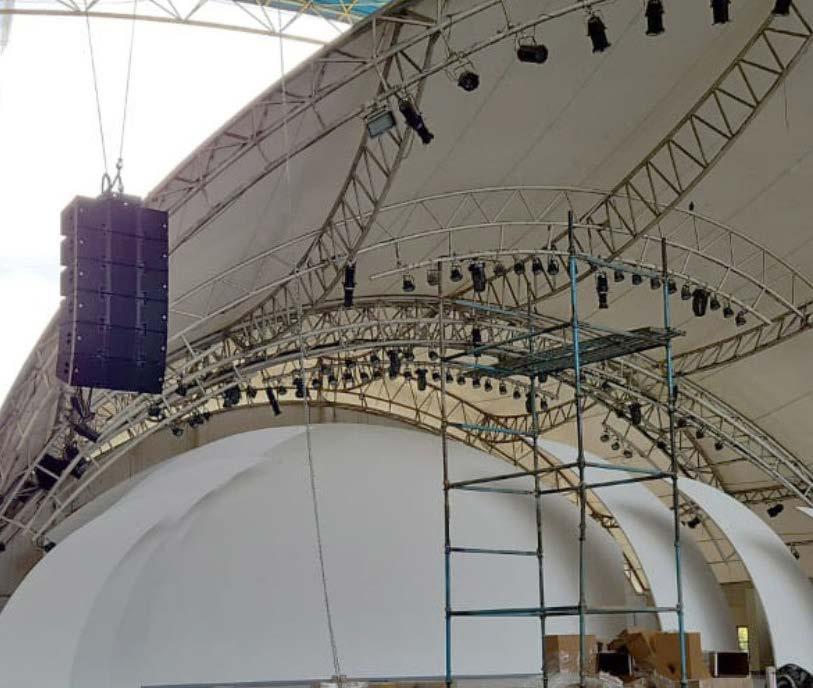




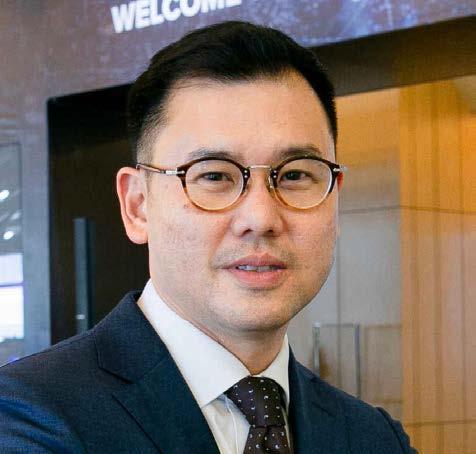
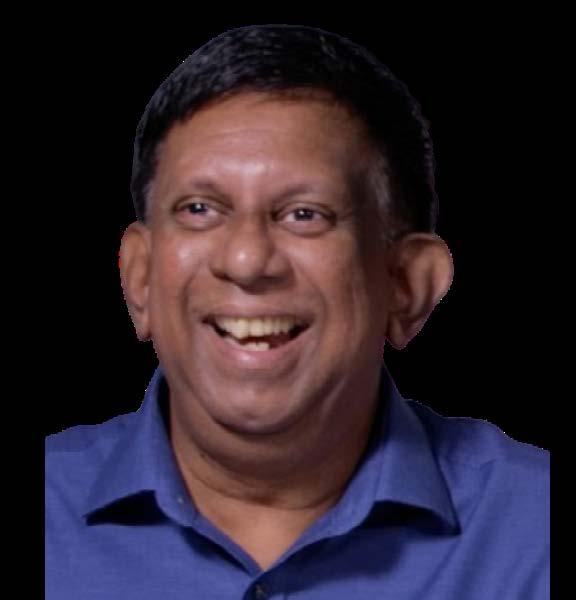




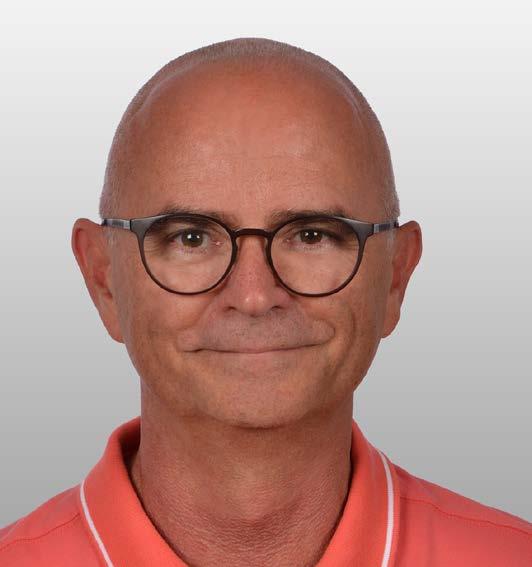
Q-SYS India Office.
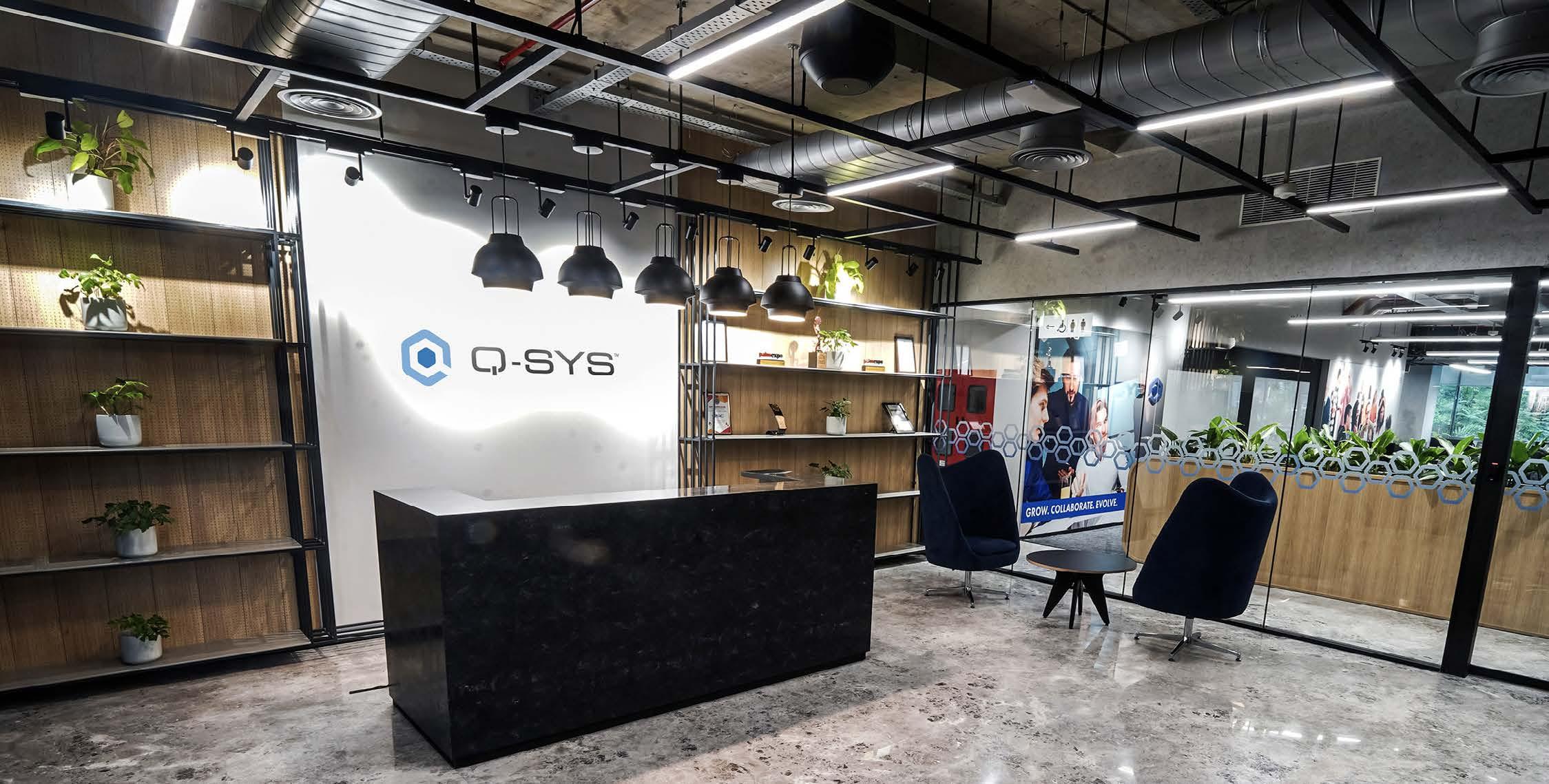
We kick off our 2023 Interview column with a company we have come to admire for its transformation from being a traditional audio company to a company offering softwarebased AV&C solutions. Though many manufacturers have been affected by chip shortages, Q-SYS management's foresight has enabled the company to weather the storm and meet its delivery obligations, making it a darling of many system integrators. SI Asia chats with Markus Winkler, Executive Vice President, EMEA & APAC, Q-SYS, about the company's journey.
A few years back Q-SYS came up with a plan to transform itself from being a traditional AV solutions
provider to its current state. Can you walk us through the process and stages and what the company has accomplished so far?
The Q-SYS history was initially rooted in the audio sector, so it was logical we initially focused on the audio digital signal processing capabilities of the Q-SYS Platform. However, Q-SYS was built on a software-based platform architected to support not only audio but also video, control, and a wide range of peripherals needed for practically any design. As the market matured and customer demands became more complex, the next phase of Q-SYS focused on showcasing the full scope of the Platform’s capabilities.
In addition, Q-SYS being built on IT standards allowed us to partner with Dell to introduce an industry-first innovation.
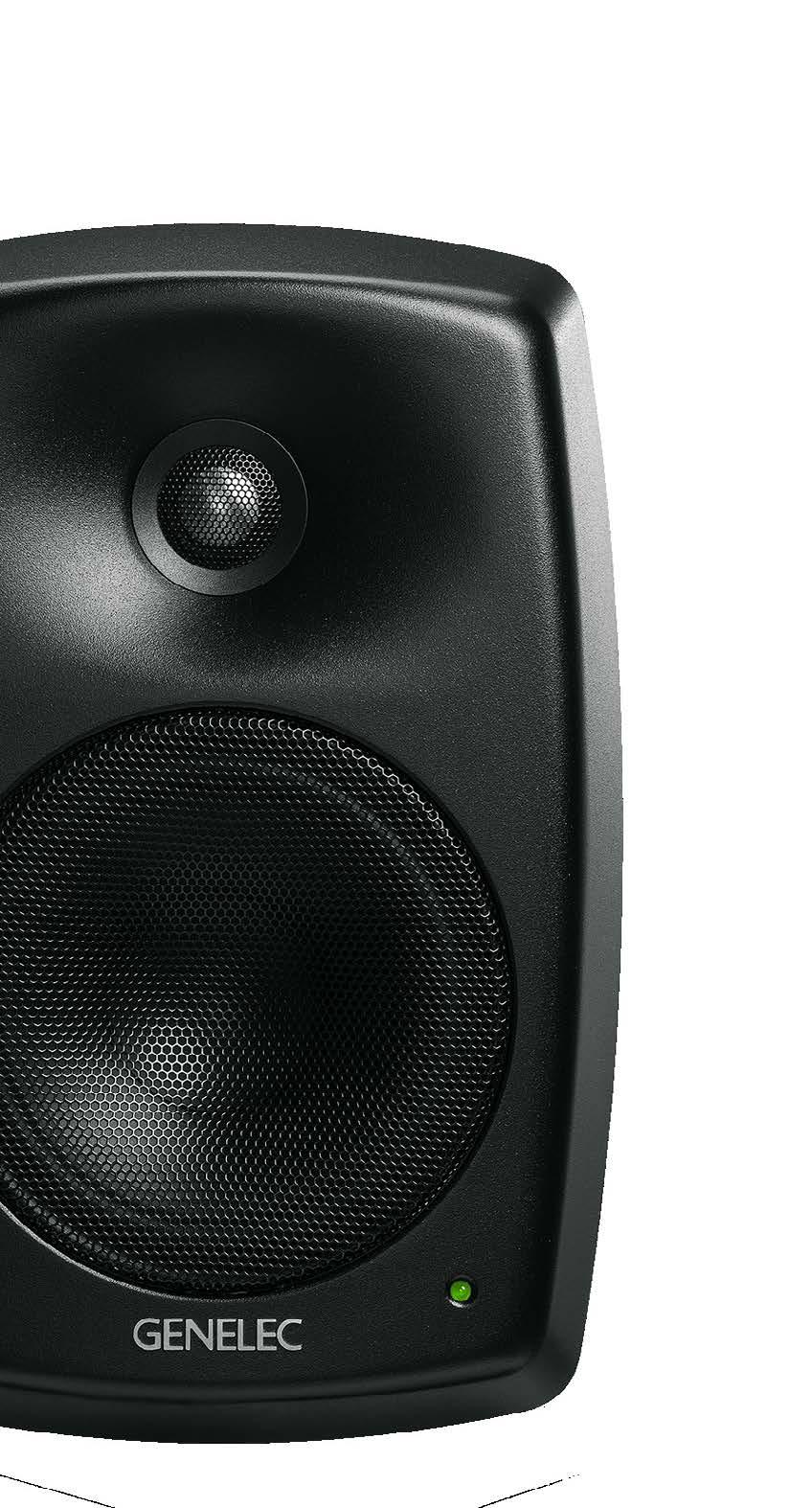


We combined the Q-SYS OS software-based processing capabilities with a standard offthe-shelf Dell server, effectively bringing AV&C processing into the data centre.
We recently launched Q-SYS vCore, a virtualized processor that provides all the functionality of Q-SYS Control in a fully software-based format that runs on a PC or server.
As Q-SYS has developed, so have the global and APAC Q-SYS teams to complement the evolving Platform. This includes the recent opening of two state-of-the-art facilities in Hong Kong and India to support sales and R&D activities in these critical regions. Most recently, a team has been established in Singapore to promote Q-SYS and provide support for the growing demand in Southeast Asia.


After thousands of installations and years of development, Q-SYS has evolved into a secure and mature AV&C platform. In addition to a robust native Q-SYS Product portfolio, we’ve also taken a unique approach to our Partner Ecosystem. We empower
technology partners and developers worldwide to create hardware, services, and software plug-ins, supported by the Q-SYS OS, that interoperate with native Q-SYS products.
It seems Q-SYS is not affected by the chip and equipment shortage. How did the company manage to achieve this?
Supply chain challenges have affected everyone in our industry. Q-SYS has minimized the impact by investing heavily in critical component parts to secure longerterm supply.
In the case of many Q-SYS products, components have not been available or have been discontinued. We have redesigned or modified over 50 products based on alternative components' availability, which helped significantly with supply continuity Another key area that has helped with our supply chain management is that Q-SYS products often utilize off-the-shelf IT components rather than those traditionally found in AV products. As
these are manufactured on a larger scale, challenges to availability have been comparatively reduced.
The best thing about our Platform's software-based nature is its flexibility. Not only do we have several processing options, but we also have a multitude of native I/O options and an entire Ecosystem of partner technology integrations that, in specific combinations, allow our customers to achieve the desired functionality.
Beyond that, we placed great emphasis on continually communicating these efforts to our partners so they could better manage their project pipelines and set appropriate expectations with their customers.
Are you able to share some growth figures with us for the brand?
For many years, Q-SYS has been growing significantly faster than the global AV market. This is not only true in the USA but also in EMEA, India, and APAC where the company has made (and continues to make) significant investments to grow regional infrastructure and organisations to better serve and support our partners and end customers.
The success and growth of Q-SYS in APAC is epitomised by the expansion of the team, which has more than doubled in the last few years and now includes leaders in Korea, Japan, and Singapore, as well as the new offices in Hong Kong and India. As a result, the business has successfully expanded beyond pre-pandemic figures, and brand awareness has risen to heights not previously seen in the region.
Further developments are planned for APAC, including opening the Singapore warehouse in the first half of 2023 and expanding the Singapore team.
These continue to strengthen the position of Q-SYS and provide greater value to our partners.
What else can we expect from Q-SYS in the coming years?
As well as further development of the Q-SYS Platform and Ecosystem, we will continue to invest in our regional teams so they, with our partners, can deliver outstanding customer experiences.
What challenges do you foresee for the AV industry, and how does the industry prepare itself to meet those challenges?
We are seeing vast shifts in user behaviour which will affect much more than just the AV industry. Digital natives are looking for authentic and captivating experiences where virtual and real-life combine. This expectation will affect all areas of life. What does the future of work look like if people – as is already the case today – are off-site but in-person interaction, even creativity, is required? How can retailers create experiences that justify a visit to a store instead of shopping online? How can the experience of going to the movies be differentiated from streaming at home?
The AV industry has a key role in answering such questions and helping create extraordinary experiences. We are confident that the Q-SYS Ecosystem will play an essential role in bringing together today's fragmented audiovisual technologies with a single platform and enable the convergence of online and offline experiences.
Datapath’s training manager, Iñaki Viloria López.
GLOBAL: Datapath’s Aetria training sessions have earned AVIXA CTS points accreditation. This will allow professionals holding AVIXA’s Certified Technology Specialist credential to earn renewal units towards their certification while also learning about the full capabilities of Datapath’s multi-source / multi-end point video management solution.
Datapath’s three-day training course, oriented to system designers, consultants and presales, covers all the hardware and software components of Aetria and shows how they can be used together to meet the unique requirements of control rooms and multisource video projects.

With hands-on experience working through practical examples, attendees are guided through Aetria’s completely structured approach, learning how to design, manage and operate easily. The content of the course includes requirements gathering, system setup and configuration, and the operation of a deployed Aetria control room solution.
To obtain AVIXA approval, RU programs must feature experienced instructors with clear evidence of qualifications in the session topic. Each class must contain at least one relevant learning objective or industry-related purpose, relate to a specific exam topic area and exam level and conclude with an assessment tool to demonstrate participants have grasped the objectives.
Following accreditation from AVIXA’s CTS renewal committee, course attendees will earn 6.5 Renewal Units (RU) towards CTS and CTS-D certification. Currently, Datapath is utilizing their demo suites at their US and UK headquarters for the courses, with more locations planned.
Iñaki Viloria López, training manager at Datapath, said: “We are committed to education and sharing best practices in the AV community and we are immensely proud to have achieved AVIXA’s coveted accreditation for our Aetria training. The numerous components to Aetria make it easier to understand in person, and it’s great that course attendees can leave our sessions with not only a greater understanding of Aetria’s benefits but also earn valuable RU points towards their CTS qualification.”
Datapath Training Course
ISE is the world’s leading show for professional audiovisual integration. Discover the latest AV solutions that deliver unforgettable experiences.
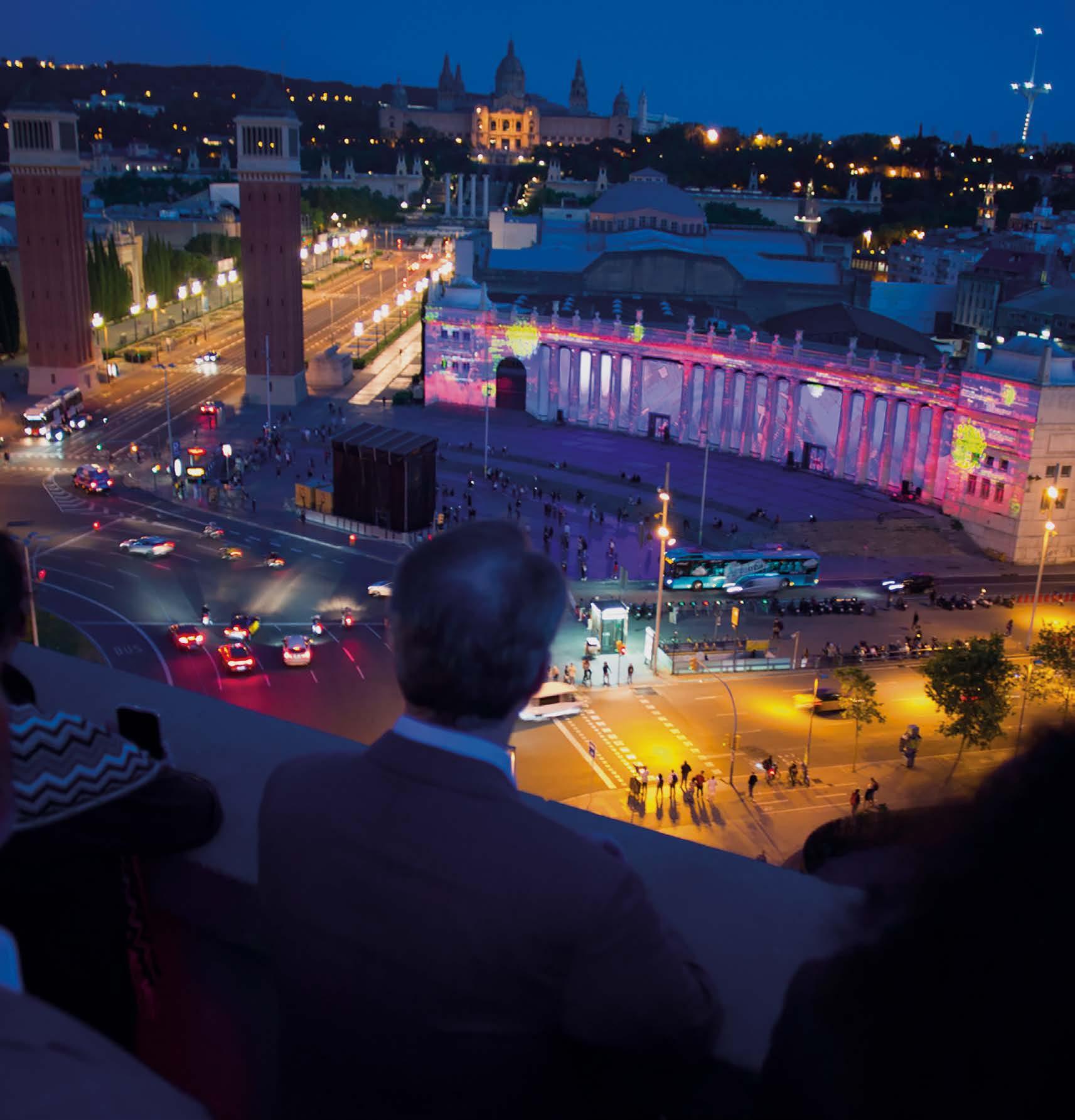

GLOBAL: The SDVoE Certified Design House program is a qualification for professional AV companies introduced by The SDVoE Alliance and an expansion of the SDVoE Certified Design Partner program.

Available online, SDVoE Alliance’s certifications publicly recognize experts in the creation of SDVoE systems that take advantage of AV/IP scalability and offer robust performance. Any company that designs, integrates, or installs AV systems can receive Certificated Design House recognition after a minimum of 25% of their technical staff obtain SDVoE Certified Design Partner certification.
“Since 2018, more than 2,000 AV professionals have individually qualified as SDVoE Certified Design Partners, so it is past time for us to recognize that
many companies have staked out a leadership position in delivering sustainable, flexible AV-over-IP solutions to end users,” said Justin Kennington, president of SDVoE Alliance. “It’s no surprise to see AVI-SPL setting the pace among system designers and installers, and I am absolutely thrilled to welcome them as the first SDVoE Certified Design House. I invite the rest of the pro AV community to join in as well.”
AVI-SPL is a digital solutions provider that transforms how people and technology connect to elevate experiences, create new value, and enable organizations to thrive and grow. AVI-SPL holds a leadership position in pro AV, consistently bringing best-of-breed technologies, products, and solutions to their customers.
“The SDVoE Alliance and its members provide solutions built on a standardized framework that is scalable, reliable and high-performance,” said John Richards, global director of Engineering for AVI-SPL. “Expertise and industry knowledge are important to our business model at AVI-SPL. As a result, we are proud to be the first SDVoE Certified Design House.”
Certification as an SDVoE Design House is a mark of that leadership attesting to the level of expertise and professional capability that AVI-SPL brings to the game. As the largest provider of collaboration technology solutions, which include their awardwinning managed services, their highly trained team works hand-in-hand with organizations worldwide— including more than 80% of Fortune 100 companies.
System integrators interested in applying for SDVoE Alliance’s Certified Design House status can visit the SDVoE Alliance’s website. Once qualified, companies can begin utilizing the SDVoE Certified Design House
credentials in their marketing and communication. Individuals can become certified by completing and passing the SDVoE Design Partner Certification courses. Click the link below to register for the SDVoE Academy and complete the courses. Courses are also available with Chinese subtitles.

MALAYSIA: Analog Way continues to expand its network in Asia by announcing the signing of an exclusive distribution agreement in Malaysia with Acoustic & Lighting System Sdn Bhd (A&L).
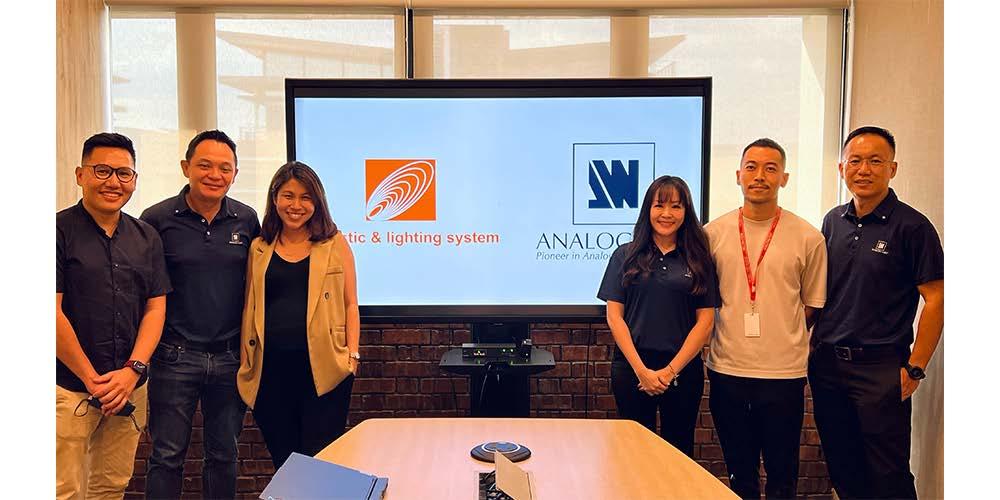
“The ongoing market appetite for high-resolution visual displays and the emerging trend of immersive experiences among venues has driven the need for AV technologists to look to high-quality image processing hardware, which is often being neglected,” said Eugene Yeo, GM of A&L. “Analog Way’s latest product ranges
align with what will be needed in the coming years and we are happy to be able to represent the brand in Malaysia.”
Established in 1993, A&L specializes in the full spectrum of audiovisual and lighting solutions, from design to supply, integration and after-sales support. “Given the current AV landscape in Malaysia we see A&L as the best partner for Analog Way to drive our business plans in this part of the region,” noted Jez Lim, Analog Way’s regional channel manager for Asia.
A&L will be hosting an Analog Way product open house along with training for operators in Kuala Lumpur in February 2023. Interested parties may contact Analog Way or A&L for more details.
Acoustic & Lighting System Sdn Bhd
AUS/NZ: NewTek is experiencing significant uplift in demand from the ProAV markets as video content creation, and video consumption continues to grow exponentially. As a result, NewTek is expanding its partner portfolio to meet customer demand by partnering with AVA Distribution to broaden NewTek’s presence in Australia and New Zealand.
AVA Distribution (AVAD) is a wholesale distribution company for AV products based in Melbourne and Brisbane, Australia. AVAD represents a wide range of consumer and professional AV products in the region. As a newly named NewTek distribution partner, AVA will help deliver NewTek products to regional customers faster alongside supporting customers with content creation efforts.
“AVAD has a longstanding reputation in ProAV markets in the region and adding NewTek and NDI streaming solutions offer significant added value to their partners
and customers. We are very pleased to add them to our growing partner ecosystem to further position NewTek as a leading and trusted tech vendor in the ANZ region and look forward to our collaboration with AVAD strengthening that position significantly.”
NewTek offers a range of products to support video production across various verticals including proAV, corporate, education, sports and esports, House of Worship and more. Its suite of products includes the TriCaster family of video production systems, PTZ cameras like the recently announced NewTek NDI PTZ3 UHD camera, NDI converter units, automated video capture solution CaptureCast, replay system 3Play, and other software-defined visual solutions to support storytellers around the world.
“AVA Distribution is delighted to be chosen by NewTek to distribute its products in Australia. We are now able to offer our Pro AV resellers a complete range of video production solutions to satisfy the growing demand from corporate, education, and government organizations producing professional quality video,” concluded Santo Pappalardo, managing director at AVAD.
NewTek


SINGAPORE: D.V.I Solutions Pte Ltd (DVI) has entered into a collaboration with the Institute of Technical Education (ITE) to enhance ITE students’ technical competencies in courses relating to audiovisual integration and the Internet of Things (IoT). The scholarships and internship programmes have come as part of establishing the DVI Scholarship during the company’s 20th-anniversary celebrations.
The 5-year agreement, with a total estimated value of over SGD 20,000, will see DVI providing two annual
bond-free scholarships worth SGD 2000 each to two ITE students, as monthly allowance, from courses relating to audio-visual and IoT yearly. It will be awarded to Singapore citizens or permanent residents of the country who are studying full-time at ITE and have performed well academically with a minimum GPA of 3.
DVI director, Chris Chong, said “Singapore has been good to us, and we want to give back to Singapore in a meaningful way, not just financially but by working with ITE to mentor the next generation of AV and IoT professionals”.
The company believes that “this initiative will provide the much-needed skill set with hands-on training in the area of Enterprise Audio-Visual capabilities as more businesses move into the hybrid work model in the post-covid world.”
D.V.I Solutions Pte Ltd
NEW ZEALAND: Hamilton Workingmen’s Club in Hamilton, New Zealand, boasts a membership of over 7000 and has an enviable range of facilities. As a community hub offering a wide range of activities, the Club is renowned for presenting high-quality live entertainment at weekends, attracting a variety of original artists and top tribute bands. The Club’s substantial main room, which can accommodate around 250 guests, recently hosted New Zealand’s number one AC/DC tribute band, NZ/DC, for a gig that saw local audio rental specialists Liquid Sound supply an HH TNA line array sound system to “let there be rock”.
Launched earlier this year, the TNA line array was designed for a wide range of small to medium-sized applications. It is based around the TNA-2120SA, a
multi-channel active subwoofer with an integrated Class D amplifier which features two high-power 12” lowfrequency woofers with exceptionally high output, and the TNA1800SA a powerful single 18” active low-frequency subwoofer. With three channels of highperformance amplification, the TNA2120SA houses 6 x cutting-edge built-in DSP presets and as part of a modular system can power up to 6 x satellite TNA-2051 passive, 2-way compact line array loudspeakers, offering an ideal solution that does away with the extra expense of rack amplifiers and processors.
For the NZ/DC gig, Liquid Sound used a full groundstacked system of 1 x TNA-2120SA, 1 x TNA-1800SA and 6 x TNA-2051 units per side. “For a busy hire company like Liquid Sound, the TNA line array provided a high-powered, extremely robust solution that is quick to set up and take down,” according to technician Brent Pinfold.
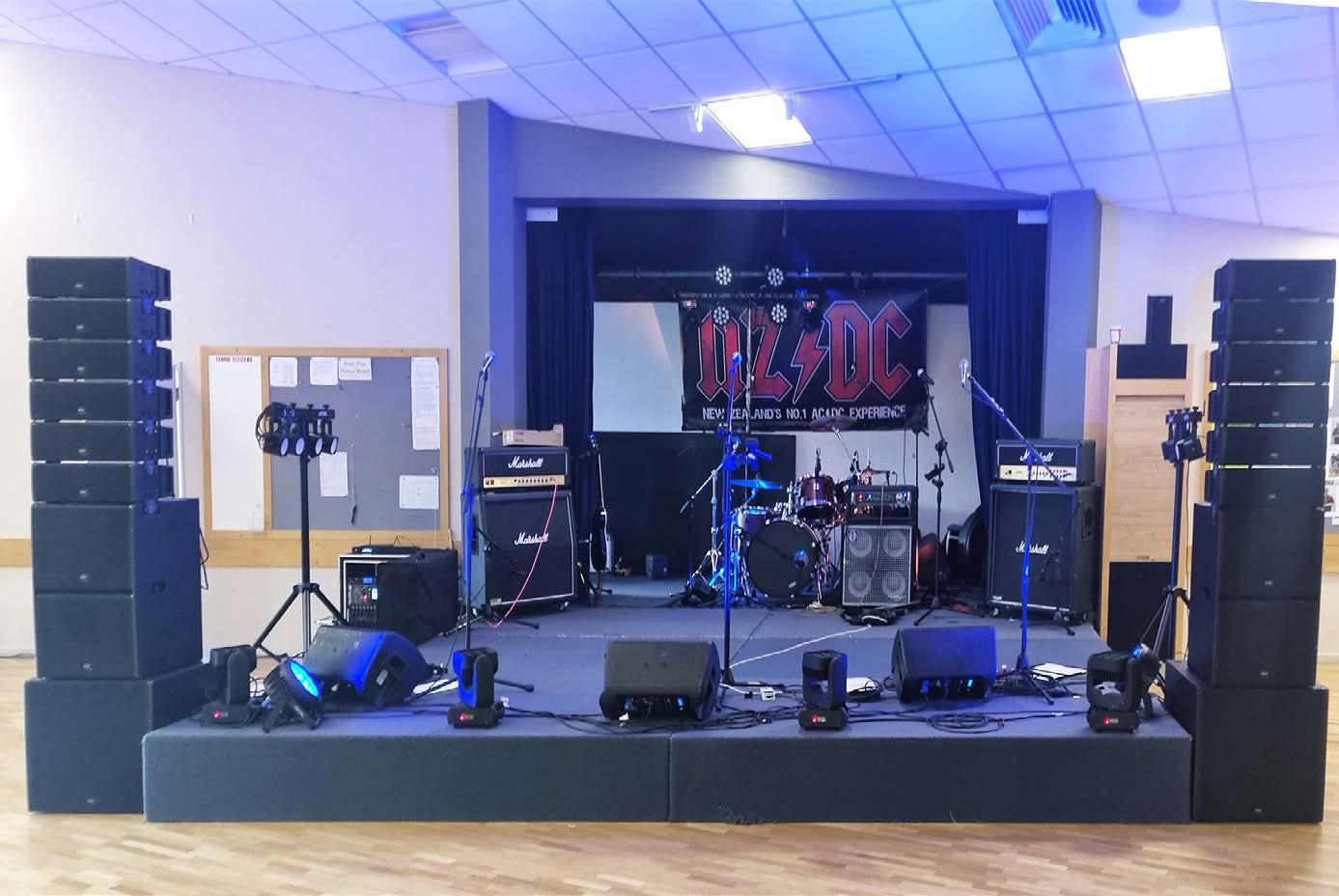
“The HH TNA line-array system won’t let you down. It’s easy to set up and provides premium audio with plenty of headroom. I’d highly recommend it to anyone looking to do small to medium-sized gigs - it certainly packs a powerful punch.”
NZ/DC’s rise to prominence as one of New Zealand’s leading tribute bands is evidenced by their packed diary and growing fan base. The band’s visit to Hamilton saw its social media feeds buzzing with compliments and demands for a swift return to the venue. The quality of the sound did not go unnoticed either, with the band’s Dan Cosgrove declaring that the system sounded “huge!”
HH Electronics/TNA-2051
INDIA: NewTek, part of the Vizrt Group, has named Mindstec Distribution as its newest distributor in APAC, with a specific focus on India.
Mindstec’s expertise in procurement and distribution of high-end audio-visual system solutions makes them a perfect fit as a NewTek partner. With NewTek as part of its portfolio now, Mindstec widens its ability to support customers in need of AV-over-IP workflows, and those looking for beyond broadcast-grade production solutions.
“With Mindstec, customers in India will have access to NewTek solutions with speed and efficiency, and NewTek will expand its global presence further in a region with no shortage of creative talent and demand. It’s an excellent match, which will see audio-visual solutions reach content creators who can make the best out of NewTek’s innovative technologies,” stated, Sabarishan, regional director of Mindstec Distribution(https://mindstec.com/in/).
The demand for NewTek solutions has been growing in the ProAV markets. With content creation and consumption on a continuous rise, the need for quality products for video production across various industries is steadily increasing. Mindstec is the latest distributor appointed in the area, and the seventh appointed this year.

“The APAC tech market, especially with education tech, is expected to boom in the next few years. We have the most accessible, complete, and innovative solutions for the education sector, but also corporate, Houses of Worship, sports and esports, and the list goes on. By partnering with strong distributors like Mindstec, we can ensure our technologies reach the hands of those that need our tech, but also that they have the local expertise to support them. It’s a great match, and we can’t wait to see the success stories start to emerge,” noted NewTek Sales director covering APAC, Paul Dobbs.
NewTek
SOUTH KOREA: The LG Art Center Seoul, the new landmark of contemporary performing arts in South Korea, was recently relocated to Gangseo-gu of Seoul, the western part of the country’s capital. The Center is the first venue in Asia to install the signature Eos Apex console. The venue also includes additional ETC products such as Source Four LED Series 3 with XDLT lens tubes, Paradigm control and touchscreen stations, and BluesSystem to provide best-in-class lighting solutions for the modern art centre.
With a total floor area of 40,000 m2, the cultural hub was designed by the world-famous Japanese architect Tadao Ando, and successfully achieves the architectural philosophy of blending nature into
architecture. There are two performance venues in the Center, one of them being the LG SIGNATURE Hall, which has a capacity of 1,335 seats, and U+ Stage which is a transformable black box theatre capable of accommodating up to 365.

After several fruitful conversations and product demonstrations organized by ETC dealer C&C Lightway, the Center selected two Eos Apex 10 consoles with 24K outputs and an Eos Apex Processor for the LG SIGNATURE Hall, working as the main and backup control system of the performance. “Eos Apex is perfect for a full-control system; it is powerful and reliable enabling my team to work confidently for every show,” the lighting director of LG Arts Center Seoul commented.
10 x Source Four LED Series 3 fixtures are installed for front lighting while the Lustr X8 array brings nuanced colour without sacrificing brightness which generates a versatile skin tone for full orchestra, operas, musicals, concerts, theatre, and ballet performances.
“We paired XDLT lens tubes with Series 3 – they are perfect for our large performance hall making lighting up the stage from the farthest distances a piece of cake!” the lighting director of the Center added. The crisp gobo projection and reduced light leak also impressed the client. The Center not only emphasizes professional and high-quality lighting at the front stage but also backstage.
The Center selected BluesSystem which provides a set of dimmable blue running lights for the dark area in the halls. The low-voltage LEDs provide safe illumination during live productions. Additionally, Irideon with Zoom lens and framing shutter features are installed in a technical gallery of the stage side area, a followspot room, and a control room, they can enhance the ambience in the rooms with a theatre feel.
The client was looking for a comprehensive control system that would manage not only general lighting fixtures but also the house lighting in the audience seating area. C&C Lightway understood the challenge
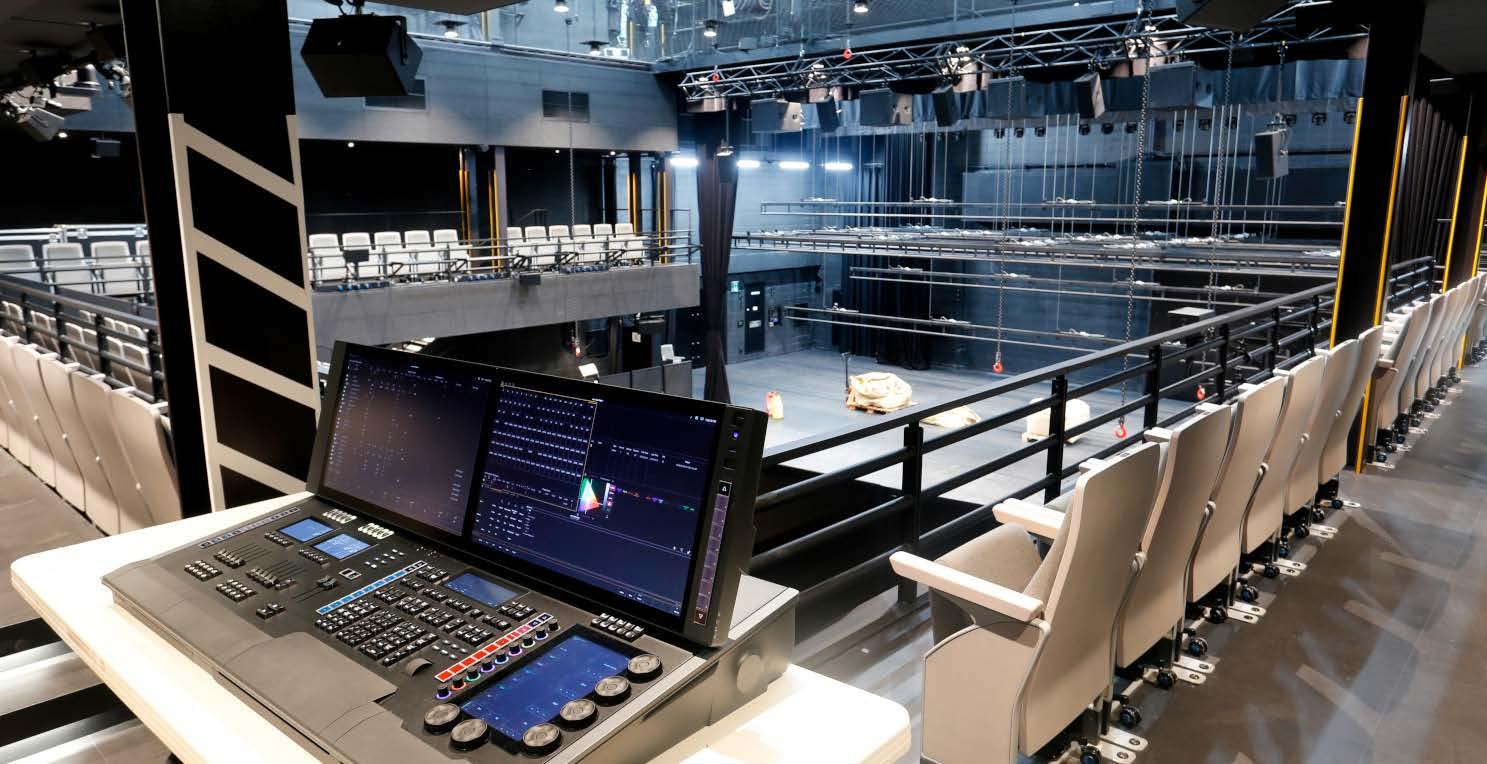
and proposed ETC’s Paradigm architectural control system with 7” Touchscreen stations installed on the sides of the stage. Users can set up “preset modes” with different combinations of lighting fixtures to accommodate various situations in the theatre. The Touchscreen station brings elegant and compact control in a customizable, intuitive interface.
Sensor3 Dimming is the sophisticated power control system proposed by C&C Lightway. Paired with the ThruPower Module, it powers up all of the lighting in the Center from conventional Source Four fixtures, and LED luminaires, to automated fixtures that generate stunning lighting effects for this world-class stage.
With the use of Response Mk2 DMX Gateways and the Response Opto-Splitters, all products in the ETC lighting ecosystem are connected in a single Ethernet network which enables seamless and reliable communication when managing all of the equipment from an integrated data distribution network.
SINGAPORE: d&b audiotechnik APAC is collaborating with Singapore’s LASALLE College of the Arts to augment tuition, research and industry engagement. The new Memorandum of Understanding focuses on LASALLE’s Diploma in Audio Production programme.

Many new pro-audio avenues are now open to LASALLE students, including internships alongside the d&b Singapore team, opportunities for students to tour d&b project installations - including the recent Singtel
Waterfront
- and visits to regional d&b R&D, manufacturing and Education and Application Support facilities. The deal comes as part of d&b audiotechnik Singapore’s commitment to supporting the next generation of pro-audio experts.
LASALLE and d&b have enjoyed many years of working together, drawing on mutual placements in the industry to create consistent opportunities. In 2017, LASALLE students were invited to train with d&b at their location in Tai Seng. Since then, a close relationship has developed through collaboration and sharing.
“d&b has developed a strong set of courses that would be a great augmentation to teaching at LASALLE,” said Dr Timothy O’Dwyer, head at the School of Contemporary Music at LASALLE. “These courses bring industry context and specificity of approach that is often brand neutral but also comprehensive and systematic. Students may also have the opportunity to be trained in a number of d&b’s certificate programmes.”
“We hope to see the continuation of sub-array and line array workshops,” O’Dwyer continued. “The integration of these workshops into the curriculum is important to give students a greater perspective and an indepth experience of the industry. Furthermore, we are excited to introduce students to d&b Soundscape and other more advanced electro-acoustic approaches in collaboration with d&b.”
Both d&b and LASALLE reported that research collaboration could advance many other projects. In addition, LASALLE lecturers will be equipped to run d&b software workshops, which may include d&b NoizCalc, a Line Array Workshop and a d&b Soundscape Workshop.
The d&b team has also introduced possibilities of different approaches to Soundscape control topologies, most particularly looking at both off-theshelf and custom OSC Control Devices.

“This partnership will help prepare students for the industry as well as help introduce the industry to the students,” noted O’Dwyer. “Shared experiences can be a great opportunity for students to see what the possibilities of the industry are. We hope that this partnership will create a better perspective and understanding for the industry and the educational institutions through the intersection of our shared interests of audio and quality.”
Gareth Kelbrick, director for Education and Application Support, d&b APAC, concluded: “d&b remains dedicated to reaching out to educational institutions that are supporting the next generation of pro-audio experts and the new Memorandum of Understanding with LASALLE highlights this. We are excited to share world-class experience, knowledge and equipment and apply this to research and education to help advance pro-audio in Singapore and look to the future of what can be achieved.”
d&b audiotechnikTHAILAND: To provide versatile and intuitive audiovisual technology for a variety of events and scenarios, Mahajak Development recently installed state-of-theart networked systems from HARMAN Professional Solutions at Muang Thai Life Assurance’s new Sarnsara Learning Center.

Founded in 1951, Muang Thai Life Assurance (MTLA) is a major provider of life insurance with 250 branches across Thailand. In 2020, MTLA constructed the Sarnsara Learning Center, a new facility to create an
ideal learning space and collaborative environment for its associates and clients. Its facilities include a 1,000-seat auditorium, 73 guest rooms and 16 training rooms of various sizes, each accommodating between 20 and 200 people.
To ensure that the array of rooms could support a variety of purposes—including seminars, meetings, group discussions, workshops and other activities— MTLA turned to trusted integrator Mahajak Development to equip Sarnsara Learning Center with the latest technology and user-friendly audio systems. Mahajak Development selected and installed HARMAN networked audio systems utilizing JBL Professional speakers, Soundcraft mixers and AMX network processors.
“We are so proud to be entrusted with providing audio solutions for Sarnsara Learning Center,” said Pongsakorn Kanchanachayphoom, project director at
Mahajak Development Co. Ltd. “Because
Thai Life is imbued with the core value of “caring”, we have made this our priority as well—to deliver our best and achieve the highest level of customer satisfaction.”
Mahajak outfitted the main auditorium with JBL CBT 100 LA-1 column loudspeaker array systems to deliver wide and balanced sound quality in the large space. A Soundcraft Si Expression digital audio console makes it easy to dial in professional quality mixes quickly, even for users with limited audio experience. To ensure excellent sound quality and clarity for a wide variety of applications, Mahajak equipped the meeting spaces and seminar rooms with JBL Control Series 14C/T, 16C/T and 18C/T ceiling loudspeakers, which blend in seamlessly with the ceiling.
Both the auditorium and the largest seminar room feature prominent motorized LED screens for video content. To ensure reliable operation and support for multiple analogue and digital formats, Mahajak
installed an AMX NX-2200 Netlinx integrated controller, which provides a scalable platform with backward compatibility and extensive network security features. AMX Modero G5 Series touch panels allow users to access that control via a beautiful, single, streamlined interface.
Sarnsara Learning Center reported that they are confident in HARMAN Professional Solutions and they are satisfied with Mahajak’s installation and customer service. They also confirmed that the system installed by Mahajak is easy to use.

“It has been a rewarding experience to work with Mahajak Development on this project,” said G Amar Subash, vice president and general manager at HARMAN Professional Solutions, APAC. “We are glad that the versatility and reliability of HARMAN products will serve Sarnsara Learning Center well into the future.”
HARMAN
HONG KONG: Hong Kong’s Peak Tram, one of the city’s most recognisable tourist attractions, recently received a full AV overhaul, including multiple LED canvases powered by AV Stumpfl PIXERA media servers to deliver educational content and bespoke experience to its visitors as they travel through various multimedia ‘zones’.
The iconic tram, which has been ferrying locals and tourists to the island’s highest point since 1888 –earning its name as one of the world’s oldest funicular railways – now plays host to several multimedia exhibits which trace the tram’s history from the Victorian era to the present day.
Rendering hyper realistic content with pixel-to-pixel accuracy, a total of five award-winning PIXERA one media servers were used, all managed from one director server across the whole attraction.
Two AV Stumpfl PIXERA one Quad server systems deliver synchronised content across multiple LED canvases throughout the ‘Go Wild At The Peak’ zone, informing visitors about the local flora and fauna At The Peak.

The PIXERA media servers enable seamless, uncompressed playback across the mapped sections of each zone, with their control capabilities supporting third-party devices, allowing content to be triggered by The Peak Tram’s building management system (BMS). The media server also interacts with lighting and audio, as well as the BMS, to provide a full audio-visual experience to visitors.
ASCL (Audio System Consultants [ASIA] Ltd) acted as system integrator for this revamp project, whilst
CosmoVision Co., Ltd provided technical support, taking advantage of PIXERA’s previsualisation features to pre-build and configure the system prior to onsite deployment.
The tramway resumed service at the end of August after its AV refurbishment, ahead of an official grand opening which took place in early December. Now, whenever a tram arrives and departs, a full ‘wraparound’ video experience with animations and striking visuals overlayed onto the surrounding environment immerse visitors and tourists alike.
The carriage sizes and accessibility of the tramway have also been improved so that over 200 visitors are now able to board the terminal and start their journey through the five distinct zones.
CosmoVision’s technical sales engineer, Jason Yeung, explains that testing content offsite revolutionises the way a project can be delivered: “PIXERA’s previsualisation tools enable designers, content producers and system integrators to pre-build everything before onsite setup,” he says. “Being able to preview and test the content prior to installation, to
ensure that the performance matches expectations, saves valuable time and resources.”
Commented Samy Cheung, assistant project manager at ASCL: “During the LED wall installation process, CosmoVision installed temporary control buttons to run pattern and colour tests on the LED wall easily and efficiently. After the installation, the UI was updated to accommodate the operator’s daily usage, providing a more flexible and convenient control system.”

With a depth of only 45cm, the PIXERA one servers employed by CosmoVision are an ideal choice for installations at attractions and venues where the equipment needs to be hidden from view.
“For this project, we utilised AV Stumpfl’s edge blending features and a full arsenal of projection mapping functions for geometric correction and alignment,” continues Yeung. “Taking advantage of AV equipment to present The Peak Tram’s historical information, the audience can now learn and explore the site in a much more engaging way than ever before.”
AV Stumpfl
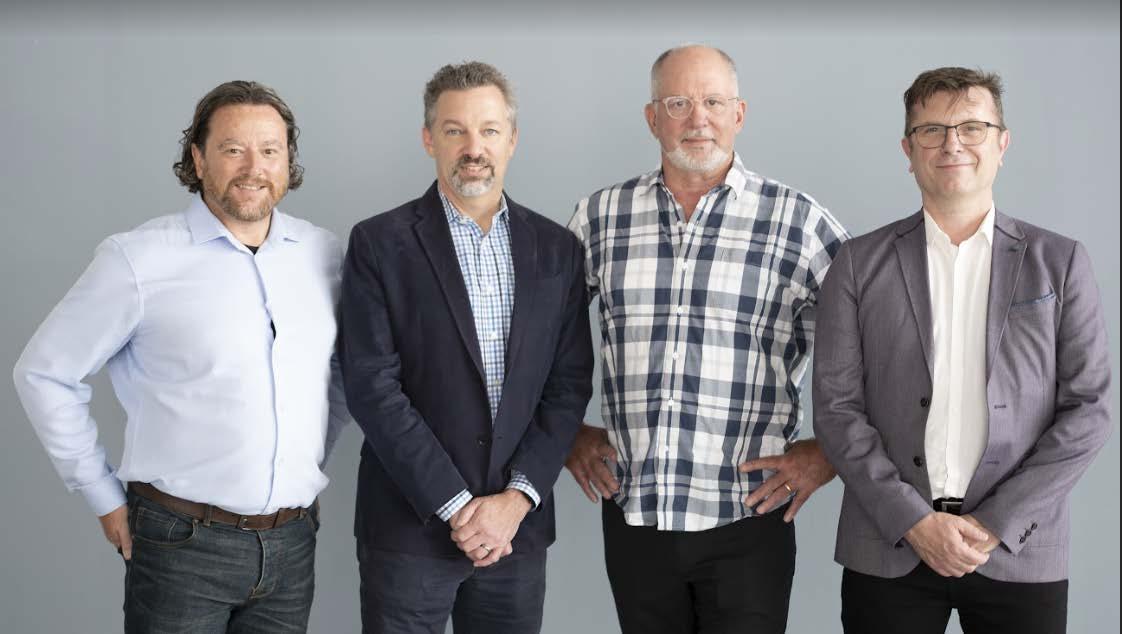
GLOBAL : Following the recent announcement of a new Global Sales and Business Development organization, L-Acoustics has introduced its new Business Development team. Consisting of talented experts within the company, alongside recent appointments of renowned industry leaders, the Business Development team will drive the L-Acoustics vision and strategy within key vertical markets while providing expertise and deep support to consultants, partners, and end users around the globe.
The new L-Acoustics sales organization is focused on sales strategy, business development, and
building territorial sales channels. Under the general management of L-Acoustics CEO Laurent Vaissié, the new team is spread across three divisions: Sales and Sales Operations focusing on developing regional sales channels; Business Development concentrating on developing commercial expertise and end-user outreach in key vertical markets; and Strategy leadership developing mid- to long-term go-to-markets strategies and key partnerships as well as managing resource planning and market intelligence.
To offer a complete commercial and technical solution to end users and influencers, the Business Development team structure mirrors that of the Project Application, Vertical Market team, led by David Dohrman.
The Business Development team will focus on setting strategies and roadmaps in five key vertical
markets. L-Acoustics veteran William Cornell takes the role of director of Musicals & Theater, while Scott Wakelin has been promoted to director, Hospitality. Paul Keating will assume a double role as managing director L-Acoustics Creations EMEA and director of the Architectural vertical. In this new role, Keating will manage distribution, logistics, and application support for residential, marine, and architectural markets in all direct markets worldwide outside the Americas while building relationships with clients, decision-makers, and private owners in this strategic vertical market.
To round out the Business Development team, L-Acoustics has appointed two new key roles. Olivier Roure joins the company as business development director, Sports Facilities. Roure will bring a global approach to the sports facilities vertical, expanding its share within the market. Roure has built a career of over two decades in the pro audio industry at leading companies like JBL Professional (a Harman Professional Company), QSC LLC, and as an independent consultant. His extensive knowledge of the North American Sports market will be a key asset in globalizing the approach to this critical market.
Industry luminary Tim Boot joins L-Acoustics as business development director, Acoustics Solutions. Focused on developing the Ambiance Acoustics System, Boot will develop the strategy for this growing new vertical market, identify and build key relationships, define market segmentation, and support growth strategies. He will also contribute to product development and improvement via market and competitive analysis. Boot has over 30 years of
experience in the industry, including audio production, acoustics, design, and manufacturing. He’s a seasoned business leader, most recently with Meyer Sound.
“This new organization will deepen our expertise in key vertical markets, strengthen our network presence globally, and allow us to plan a multi-year business roadmap that addresses both our current product offering and future innovations in loudspeakers, software, electronics, and services,” concluded Vaissié.
“With this team of outstanding professionals—who have proven their expertise within our team and throughout the industry—L-Acoustics will continue to elevate the listening experience for live entertainment and beyond.”
L-Acoustics
GLOBAL: Kramer and Jabra have joined forces to create a next-generation solution for wireless presentation and collaboration, from huddle spaces to large conference rooms. The solution incorporates the latest VIA Connect2 and VIA Campus2 from Kramer and Jabra’s PanaCast video range to create a bespoke solution designed for the hybrid workplace, giving those joining remotely the same great experience as those who are present in the meeting room.
The powerful multi-participant content-sharing capabilities of Kramer’s VIA Connect2 for hybrid meetings and VIA Campus2 for lecture halls and classrooms, come together with the intelligent features of Jabra PanaCast to create a fully certified solution that is quick to install and intuitive to use.
The solution delivers advanced and scalable Bring Your Own Device (BYOD) and Bring Your Own Meeting (BYOM) participation with plug-and-play capability and One-Step-Conferencing through sessions that are driven from the user’s own device for touchless operation.
Kramer’s VIA Connect2 and VIA Campus2 seamlessly integrate with the state-of-the-art Jabra PanaCast 50, which features astounding audio, a unique 180° field of view, and intelligent zoom and Virtual Director mode to make meetings more immersive. Real-time whiteboard streaming ensures inclusivity for seamless remote collaboration.
Aurangzeb Khan, senior vice president of Intelligent Vision Systems at Jabra added: “We engineered our PanaCast range to provide intelligent, secure and high-quality video solutions to users, no matter where they choose to work from. Combining PanaCast with Kramer’s wireless presentation solutions makes hybrid working and collaborating with colleagues easier than ever.”
Participants can connect from any device or operating system and experience unified communications outof-the-box, supporting leading conferencing platforms such as Microsoft Teams and Zoom.
The Kramer VIA Connect2 and VIA Campus2 are compact wireless presentation and collaboration devices with the smallest form factor in the industry. They can be centrally deployed, managed and configured remotely using VIA Site Management (VSM). This software management platform enables IT AV integrators to maintain hardware remotely via the cloud or through on-premise networks.
The Jabra PanaCast AV intelligent and secure solutions work with all leading UC and conferencing solutions, enabling teams to connect anytime, anywhere from whatever equipment they’re using with professional audio and video features.

“Jabra’s PanaCast is an amazing line of video bars and combined with Kramer’s leading wireless presentation and collaboration platform, we bring best-in-class audiovisual experience to teams working together. Our partnership goes beyond the product certification – we
have similar go-to-market approaches with many joint channel partners that will benefit from our sales and marketing initiatives,” said Aviv Ron, vice president of Corporate Development and Strategy at Kramer.
Concluding, “We also have a great cultural fit and share a passion for developing technologies that continuously improve audiovisual experiences, to help people feel closer together even when they’re far apart.”
The AMX Varia family of professional-grade, personadefined touch panels have been designed to adapt to the unique needs of any corporate, education, government, hospitality, entertainment, or other user environments.

Available in four screen sizes, from 5.5” to 15.6”, Varia panels streamline meeting spaces boardrooms, classrooms, auditoriums and more. A dynamic architecture platform supports the diverse needs of any user to define the entire panel experience.
Features include Persona Apps which, depending on the selected persona, Varia can transform into a fullscreen, frameless Web Kiosk for accessing web apps such as a wayfinding app, hoteling app, or custom control app. Varia can also act as a dedicated Zoom Rooms Controller; an AMX Book Room Scheduling Panel; or an AMX G5 Control Panel.
Additionally, the side LEDs on Varia panels can be configured to any of over 16 million colours.
Integrated speakers, microphones, and a front-facing HD camera enable telephony and video conferencing apps to be utilized effectively with Varia. Built-in NFC, proximity sensing and ambient light sensing empower advanced environment integration making Varia panels some of the most versatile interfaces ever designed.
Varia touch panels are offered in two styles: Varia and Varia SL. Varia is available in three screen sizes: 8”, 10.1”, and 15.6” and offers unique mounting flexibility. Panels can be mounted to a wall, glass, VESA-mount, or a tabletop via an optional accessory.
Varia panels include a versatile mount that provides wall, glass, and VESA-mounting capabilities. Optional tabletop mounting accessories are also available offering users the ability to meet any mounting need.
Varia SL is optimized for in-wall installations, utilizing standard single-gang electrical boxes and is available in two sizes: 5.5” and 8”. Two Varia “No-Comm” models exclude the camera, NFC, and microphone to meet the security requirements of facilities that do not allow these capabilities.
AMX/Varia
With version 3.0, layer resources available on large screens are significantly optimized using regions and captive PIPs. This is particularly useful for applications that require the display of a large number of sources simultaneously and that do not need to have layers spread out over the entire pixel canvas.
The new 3.0 release also brings the ability to easily clone any program output to another physical output available on the Aquilon image processor. This useful feature allows users, for example, to create redundancy for LED wall processors’ backup inputs without needing external splitters.

With version 3.0, the LivePremier Aquilon presentation systems now offer advanced colour management thanks to a new video processing architecture based on 3D Look-up Tables (LUTs). Once updated, the Aquilon image processor will contain predefined LUTs for all automatic adjustments and conversions. Additionally, it will be possible to import and apply custom 3D LUTs from other vendors or generated by specific third-party tools.
Three types of 3D LUTs are supported: conversion LUTs intended for advanced colourspace and dynamic range conversions, correction LUTs for advanced colour corrections on inputs or outputs, and 3D CremaTTe LUTs to easily perform advanced input keying using Analog Way’s new dedicated 3D CremaTTe tool available on Analog Way’s website.
Analog Way’s LivePremier modular and scalable 4K/8K multi-screen presentation systems and videowall processors deliver uncompromising presentation experiences to high-end staging and premium system integration. The range includes five high-performance, pre-configured products (Aquilon RS alpha, RS1, RS2, RS3 and RS4) and two fully customizable models (Aquilon C and C+) that can be tailored to match the requirements of any project or event.
Analog Way/LivePremier Presentation Systems 3.0

wide input dynamic range of 134 dB. This enables transmitters to handle any signal that is thrown at them.
Their operating time is 12 hours with the BA 70 rechargeable battery, which will usually afford functionality through rehearsals and the show or event itself. Operating time with standard AA batteries amounts to eight hours. Depending on the RF environment, the transmitters have a range of up to around 100 m, enough even for very generous stage layouts.
Sennheiser’s EW-DX devices are shipping in EMEA, Japan, and Singapore. Available products include the EW-DX EM 2 two-channel receiver, the handheld transmitter – with or without a programmable mute switch – and the bodypack transmitter. The latter also comes in two versions, either with a special 3-pin mic connector or a 3.5 mm (1/8”) jack for mics or instrument cables. Convenient set packages are available, too, with further, higher frequency variants ready in Q1 2023, and more EW-DX devices and software being added to the line in mid-2023.
The EW-DX system combines pro features and ease of use in well-designed, rugged housings. A technological successor to the evolution wireless G4 series, Sennheiser aims to set a new standard in the live audio industry with the EW-DX for its simplicity, reliability, audio quality and frequency efficiency.
For rental companies, touring bands, theatres, worship or broadcasting, EW-DX offers the “lowest” latency on the market (1.9 milliseconds) and eliminates the need for frequency calculation while offering an ultra-
EW-DX systems additionally benefit from an automatic multi-channel RF set-up, scalable remote control and monitoring, as well as AES-256 encryption for the secure transmission of content. The bandwidth is higher than with EW-D, up to 88 MHz, enabling more channels to be accommodated.
As part of the Evolution Wireless Digital family, EWDX is respectful towards the valuable resource that is the RF spectrum – and takes the complexities out of wireless at the same time. Carefully engineered, the systems do not generate any significant intermodulation products. From a spectrum efficiency point of view, this means that the microphones do not pollute the available spectrum with their own intermodulation products, hence more transmission frequencies can be used and distributed evenly at regular distances (the so-called equidistant frequency grid or tuning grid). A frequency calculation is no longer needed.
microphone heads (standard Sennheiser capsule interface) is available for the handheld.
All transmitters feature a trim control so they can alternate on the same receiver channel – for example when multiple guitars are used – and still have the same level on the mixing desk. For guitarists and bassists who do not want to miss that typical cable sound, the EW-DX SK bodypack offers a three-step cable emulation.
In standard mode – i.e. with an equidistant frequency spacing of 600 kHz – EW-DX accommodates up to 146 links within its switching bandwidth, and up to 293 frequencies in Link Density Mode (LD, at 300 kHz spacing) which just comes at the expense of approx. 10% of the range, so users will have the same great audio quality and transmission power in LD mode, too. EW-DX does not generate any significant intermodulation products and therefore allows transmission frequencies to be simply placed with equidistant spacing

EW-DX offers a choice of two bodypack transmitters – the EW-DX SK with a 3.5 mm jack for microphones and instrument cables, or the EW-DX SK 3-PIN for microphones with a special three-pin connector.
The bodypacks can be used with any digitalproof Sennheiser clip-on and headset mic, the Neumann MCM system and digital-proof third-party microphones.
The handheld microphone is also available in two versions: with a noiseless, programmable mute switch (EW-DX SKM-S) and without a switch (EW-DX SKM). The mute switch can be programmed as ‘off’, AF Mute and RF Mute – the latter enabling you to change settings inaudibly or to keep a spare mic ready for use. A wide range of 14 Sennheiser and Neumann
The EW-DX transmitters are the first on the market to feature e-ink displays – even when switched off, users will still be able to read off essential transmitter data. They are also fitted with an adjustable low-cut to reduce handling noise or pop noise in a broadcasting situation. Settings are ‘off’, 30 Hz, 60 Hz, 80 Hz, 100 Hz and 120 Hz. All transmitters feature charging contacts for in-device charging of the BA 70 battery and an inbuilt test tone generator.
Display brightness can be adjusted, all settings locked, and – an invaluable asset in more intimate stage settings or a broadcast environment – the green status LED of the transmitters can be turned off.
The EW-DX EM 2 is the first two-channel receiver to launch in the series. It is an ideal choice for users that do not require a digital audio output, which will become available with the two Dante-enabled receivers in mid-2023.
The EW-DX EM 2 is fitted with an Auto Scan function, which will assist in finding good frequencies for a single receiver or multiple networked receivers. Transmitters are conveniently synced via Bluetooth Low Energy so no line of sight is required. Furthermore, users can choose settings to exchange. If only a transmission frequency change is required,
users can select just that while all other transmitter settings remain untouched.
The receiver is fitted with headphone output as well as volume control, both balanced XLR and unbalanced 6.3 mm analogue outputs, and an RJ 45 port for Power over Ethernet and integration into control and monitoring networks. An OLED display shows both channels at a glance, and a link quality indicator helps avoid surprises.
Until more charging options become available in 2023, the two-bay, stackable L 70 USB charger will recharge the BA 70 batteries. This charger is also available in the EW-D charging set, complete with NT 5-20 UCW power supply unit and two BA 70 batteries. Meanwhile, the EW-D power distribution cable and matching NT 12-35 CS power supply unit will power up to four EW-DX EM 2 receivers and keep your set-up cleaner. The EW-D ASA active antenna splitter, EW-D AB antenna booster and ADP UHF passive, directional antenna complete the system accessories that are available now.
To get EW-DX latest firmware updates right from the start, Sennheiser recommends downloading its free

Sennheiser Control Cockpit (https://en-us.sennheiser. com/control-cockpit-software) to a Microsoft Windows computer. Performing an immediate update to the receiver firmware ensures that you will benefit from the full functionality the system can offer. Assistance can be found in this How-to Guide. In mid-2023, new versions of the Sennheiser Wireless Systems Manager (WSM, for firmware updates and professional operation) and the Smart Assist App (for convenient operation of smaller set-ups) will be available.
Following the launch of additional frequency variants and a network-enabled, two-bay, in-device desktop charger in Q1 2023, mid-2023 will see further hardware becoming available, such as two- and four-channel Dante receivers and a dedicated charging module for the L6000 rack-mount charging unit.
Sennheiser/EW-DX
a 1” compression driver coupled to a wide dispersion horn. Presented conservatively like the rest of the range in a unique angled low-profile Baltic birch enclosure and designed to present exceptional speech and music definition, the ESD8 provides a smooth hifidelity response and delivers a natural sound quality and level that is superior to many larger competing products.
Ideal as a main system speaker or as an in-fill for larger systems, the flexible ESD8 can be applied quickly and efficiently on podiums, stands or suspended. Applications range from corporate presentations and functions to infill, close monitoring or installation. Combined with subwoofers – of which there are four to choose from in the ESD range – ESD8 offers high-quality full-range performance.
The ESD range of two-way and three-way passive loudspeakers from KV2 offers a wide variety of loudspeaker solutions. The range includes the ESD Cube which is said to be ideal for peripheral reinforcement, the ESD15 which is capable of acting as a standalone PA/monitor system, and the ESD36 which has “found favour” with AV rental and production companies as a powerful, full-range solution with excellent vocal intelligibility in a compact format.

KV2 has now extended the range to include the ESD8, which slots neatly into the range between the existing ESD6 and ESD10. As its name suggests, the ESD8 is a compact passive 2-way, high output full-range loudspeaker incorporating an 8” trans-coil woofer and
KV2 Audio/ESD8Makers of custom security, enclosure and kiosk solutions for the AV industry, Mega Media Industrial has created a durable weather enclosure for the ZeeVee ZyPer4K-XS SDVoE decoder (copper version).

The enclosure offers robust weather resistance and security for outdoor AV applications. The powdercoated, fully welded steel enclosure features sealed gaskets, hidden hinges and an integrated exhaust fan. It is designed only for those decoders using Power over Ethernet (PoE) as their power source.
The enclosure is shipped ready to install and mount a ZyPer4K-XS decoder, with pre-drilled 3/8-inch holes, two vent plugs, two IP54-rated cord grips, stainless steel mounting fasteners and a square key.
The video in the link below illustrates the value proposition of the enclosure, including how it can be used to quickly mount a ZyPer4K-XS copper decoder. The enclosure, part number ENC1210-ZV, can be ordered directly from Mega Media Industrial.
Mega Media Industrial/ENC1210-ZV

Extron’s MediaPort 300 4K HDMI to USB bridge expands the company’s MediaPort line which integrates Pro AV systems with software codec conferencing applications. Supporting popular software communications platforms such as Microsoft Teams and Zoom, the MediaPort 300 brings 4K capabilities, bridging the gap between simple webcam-to-computer solutions and professional conferencing systems.
For small meeting spaces with just a computer and display, it is ideal for enhancing audio and video quality by adding support for professional-grade equipment such as 4K videoconferencing PTZ cameras, boundary microphones, and sound reinforcement systems. In meeting and large conference rooms, it easily integrates a conferencing computer into a fully equipped AV system with video distribution and processing, control, microphones, and full sound reinforcement.
Options for PoE+ or local power and the small 1” (2.5 cm) form factor metal enclosure make installation faster and less costly. The MediaPort 300 works seamlessly with computers using generic USB video and audio drivers. It features an HDMI input with an HDCP-compliant loop through that accepts signals up to 4K/60, and scales output video on the USB-C connector to a host computer at rates up to USB 5 Gbps. Audio features include program and mic inputs, HDMI audio de-embedding, USB bidirectional audio, and line-level outputs.
The MediaPort 300 also features audio mixing as well as the level and mute controls. This enables it to serve as a soft codec interface, giving it the flexibility to integrate into larger hardware codec or DSP systems.
The MediaPort 300 is available to order now.
Extron/ MediaPort 300
The full presentation power of USB Fusion is unlocked through the free USB Fusion companion app for iOS and Android tablets, which provides expanded layout controls and lets users add pictures, video clips, background music, handwritten notes, and more to their presentations. USB Fusion’s live, on-video drawing and notation features have also been a hit with sports organizations and broadcasters looking for easy telestrator capabilities.
Magewell has begun shipping its award-winning USB Fusion multi-input video capture and mixing device. The versatile new hardware and accompanying app let users easily combine camera, wired screen share, and media file sources into attractive live presentations for online lectures, webinars, live streaming, event production, video conferencing, and other applications.

Featuring two HDMI inputs and one USB webcam input, USB Fusion lets users switch between 1080p60 HD sources or combine two inputs (picture-in-picture or side-by-side) into one output and capture the result into popular Windows, Mac, or Linux software via its USB 3.0 interface. It also offers an HDMI output for connection to a projector, display, or downstream production equipment, making it equally adept as a standalone, tablet-controlled presentation device.
USB Fusion allows users to compose and control their presentations via on-device buttons to switch between sources or select a combined scene layout, while a browser-based web interface offers presentation management, scene switching, status monitoring, and device configuration.
The company also announced an upcoming free firmware upgrade that further expands USB Fusion’s rich feature set with additional integration and user convenience capabilities. Leading the list of new features in the upcoming USB Fusion firmware upgrade is ISO recording. Users can now choose to create an isolated recording of the source feed from one of the device’s three inputs, rather than recording the combined output. Presentations and related media assets can now be exported and re-imported for archival purposes or transferred to another USB Fusion unit. Additional new features include scheduled recording; the ability to automatically back up recorded videos or images to Google Drive; and new sleep modes for eco-friendly power management.
USB Fusion is available immediately through Magewell’s global network of authorized channel partners. The new USB Fusion firmware update is currently in beta testing and is expected to be released soon.
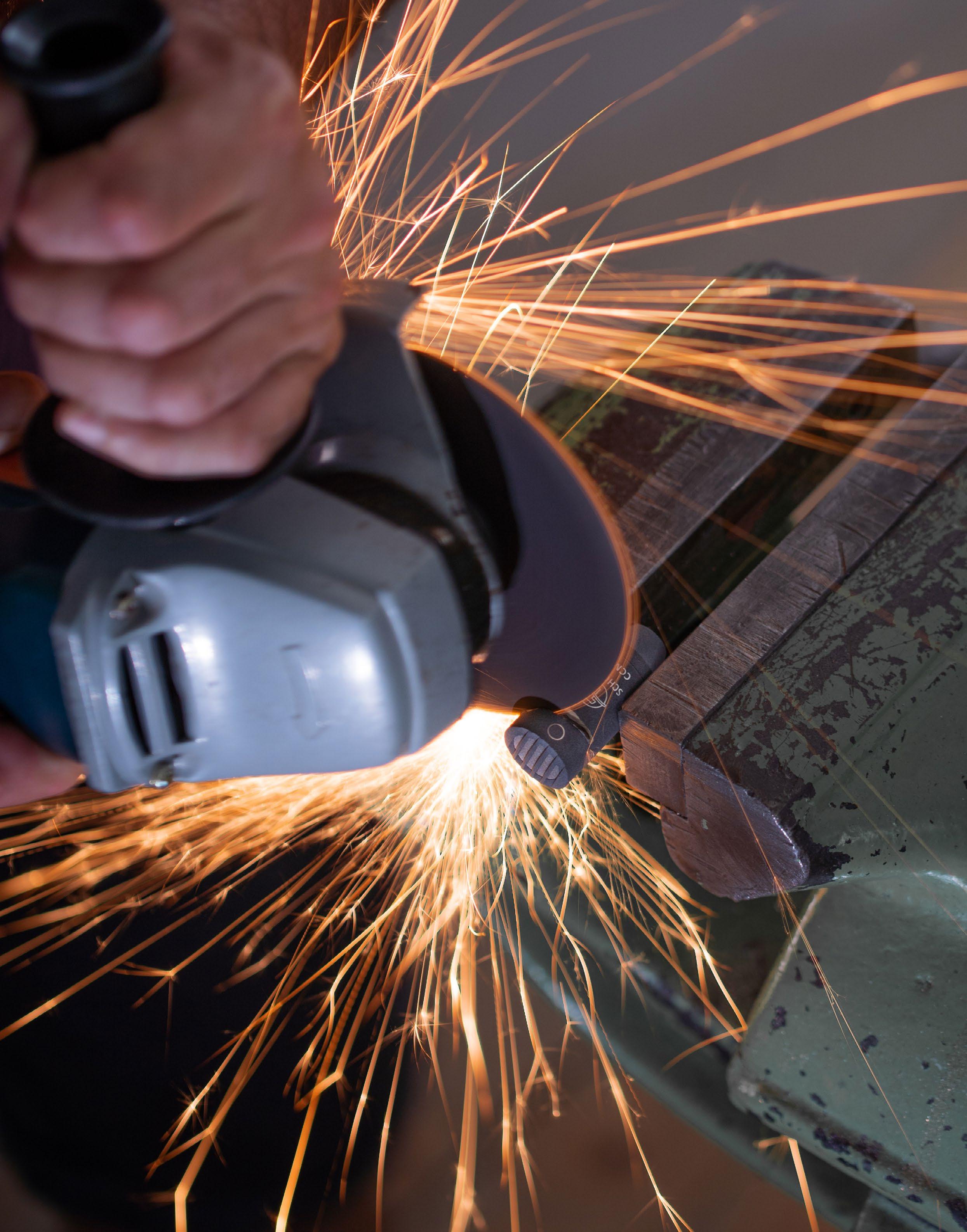
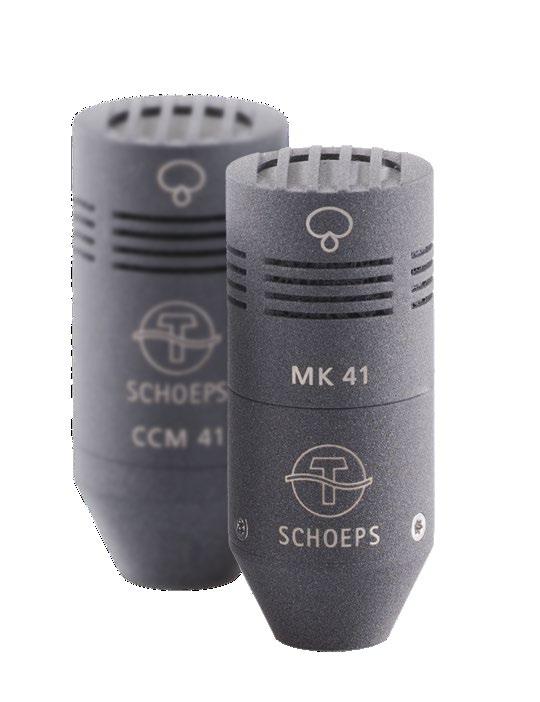

Industry experts note the realities of bringing together truly sustainable pro AV solutions; and the potential future of this noble trend
by Elton NoronhaBefore the rise of the pandemic that crippled the world in 2020, Sustainability was considered to be a high point of discussion on global agenda. And though at the time industries like petroleum / oil refineries and motor vehicles found themselves on the receiving end of most of the criticism; world leaders did seem to admit that it was high time that every company across every industry step up to the plate in sharing the responsibility of creating a ‘greener, more sustainable future’.
There’s no denying that the professional AV industry, ever since 2016, witnessed an upward trajectory in terms of business growth and consumption. Customers, builders, owners and integrators became exposed to a wider range of technologies that allowed
them to ‘do more’ and ‘experience better’; which basically fostered the increased consumption of digital signages, presentation solutions, interactive displays, cutting-edge audio, and more. And it is perhaps safe to say that this increased demand for leading edge AV solutions contributed to the increasing strain on sustainability as a concept; considering the fact that such solutions asserted rather high energy requirement for seamless operation.
This primarily formed the basis of ‘Green AV’ – an AV sustainability movement made popular in Europe that was promoted by some of the most noted AV manufacturers who partnered with a few noted AV consultants and design + integration service providers
in the region. On the other side of the world in the US, efforts to promote and recognize sustainability lead to the U.S. Green Building Certification Institute offering Leadership in Energy and Environment Design, or LEED, certification; which the Institute proclaims as the “most widely used green building rating system in the world.”
The principal idea behind such initiatives was to ensure that AV experts help their clients choose more sustainable options when integrating new technologies and solutions. And some of the crucial points considered within this endeavour includes choosing technologies and solutions that have been designed to be:
1. ‘future-ready’ in terms of efficiently adapting to future operation demands and capabilities without compromising on performance value,
2. durable in terms of keeping up with consistent usage, and
3. energy-efficient + automated (to turn off when not in use) to greatly minimize energy consumption and subsequent wastage.
Then comes the aspect of adopting technologies and solutions that allow various stakeholders to collaborate remotely; thereby resulting in environmental benefits such as lesser travel and emissions per employee / stakeholder, lesser on-site energy usage, and improved efficiency in terms of timelines and total scale of work delivery, etc.
And finally, the added aspect of going the extra mile in convincing clients to switch to renewable sources of energy to power their technologies and solutions. For example, setting up solar panels as the primary source
of power for the technological infrastructure at a project site. On the one hand, it is true that the up-front expenses for such an endeavour would be higher than sticking with conventional energy sources. However, using such an arrangement to power ‘energy-efficient’ technologies and solutions as mentioned in the earlier paragraph, would result in a dramatic decrease in the total operational expenses, thereby making the total cost of ownership more viable; and in many cases, even profitable.
While the idea and thought are commendable – its fruitful execution demands a great deal of time, effort and consistent active collaboration between all AV stakeholders, especially consultants and AV integrators.
While considering AV sustainability within a project, it becomes crucial for end users to choose an AV integration partner who is deeply committed to the vision of delivering truly ‘green’ AV systems and solutions. When such integration partners are allowed to join a project early in its lifespan, they can contribute to ensuring that all key decisions are made with the ultimate objective of achieving true sustainability from the get-go.
Speaking about the kind of approach adopted towards ensuring true sustainable AV for a project, Anna Aubusson, Lead Consultant at CTS Consulting comments, “Sustainability is a big part of what we do at CTS, and

especially as a part of our Consulting services. Rather than approach it as a silo; we prefer to conceptualise sustainable technology and audio-visual practices as one part of a larger discussion around wellbeing for end-users as well as facilities managers; in addition to to including all aspects of sustainable design that encompasses environmental impact, finance, accessibility, ethical sourcing, and planning for scalability. Through this lens, we often approach our clients regularly to understand their short-mediumand long-term goals, so that these can be aligned continuously as their circumstances change, and as new solutions become available which may benefit them along each point in that timeline.”
CTS was engaged by one of Australia’s largest financial corporations to review their existing AV technology standards and their AV environment as a whole. The goal of the project was to improve the user experience in a mid/post COVID19 pandemic environment and holistically assess and provide guidelines around the physical space, acoustic environment, intellectual property, future tenancies, delivery risks, and sustainable practices.
Anna informs that the CTS Consulting aligned the planning process with the United Nations 17 sustainability goals, and provided what they foresaw for the client as the 10 key recommendations to be incorporated into their technology standards in order to most effectively and impactfully adapt to sustainable deployment of infrastructure for their staff and clients. These included:
• Energy Rating Certification: Devices to have Energy Rating certification and use low power consumption
• Monitoring of Devices: BMS and power consumption monitoring of devices.
• 5+ Years of Intended Use: Devices to have expected life of 5+ years.
• Life Cycle Assessment: Equipment manufacturer to have Life Cycle Assessment ISO 14040:2006 and ISO 14044:2006 for their products.
• Packaging & Waste Management: AV equipment to come with 100% recyclable packaging. AV Integrators shall provide internal waste management protocols. Manufacturer to have re-use and recycle programs.
• ROHS, Cobalt, & PVC Free: AV systems to be ROHS, Cobalt and PVC free.
• Early Procurement: Early procurement of hardware to avoid high carbon emission for airfreight / low quantity deliveries.
• Inclusion Policies: AV Integrators / Consultants to have inclusion policies.
• Software Over Hardware: Use of software rather than hardware.
• Community Re-use Programs: Establish programs to re-use old equipment and sell or donate. “With cost as a naturally important factor in decision making; we often highlight the long-term sustainable funding opportunities which come with considering technologies which may be repurposed at end of life, implemented into different use-cases as their business scales, or which may help with refining their overall technology and energy footprint by minimising constant additions or large-scale changes to their technology standards. A key tool to this process is often taking a consultative approach to technology roadmaps and budgeting over multi-year plans. Where in past this is often completed as an instance or
snapshot in time, we have found a better approach is to help shape an overall roadmap, but advise regularly with updated mini-budgets and present into our clients with industry updates which may create additional long-term benefit” affirms Anna.
On the other hand, Peter Hunt, group CEO of Hewshott, strongly believes that sustainability is a subjective and broad topic, and any traction largely depends on the client; as he points emphasizes how Hewshott is currently involved in a number of projects where the broadest interpretation of sustainability has been considered. As Peter explains, “Front and centre of most people’s minds is the use and reuse of equipment; and fundamentally, there are two major client types – those that will run equipment until it does not work anymore and has to be replaced; and those that undertake a refresh periodically. One case means equipment is end of life and is disposed of, the other case calls for a reuse strategy, such as charitable causes. Of course, sustainability is much more than that – from manufacturing principles to the supply chain (including transport) and onto recycling packaging. If sustainability is to include the environmental costs of production and delivery, and enforced labour conditions then it is indeed a wide topic. In discussions with clients, it’s a sad reality that sustainability in AV rarely gets a mention, but I think that will change – it has to change.”
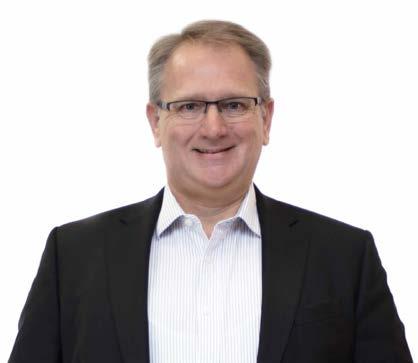
Speaking more candidly about the various projects that Hewshott has had to work towards the concept of sustainability but in its varied forms, Peter informs that one such project is a major fit-out where the client has limited power for their tenancy, and therefore choices had to be made around what technology and equipment was to be used, with a special focus on
minimising power consumption. On the other hand, another project had the Hewshott team reasoning with the client that some of their existing equipment wasn’t at ‘end of life’, and could indeed be re-purposed with minimal project risk and avoiding functional products being sent to landfill. Finally, a third project that had a very public facing AV solution based outdoor which obviously had to be designed using technologies that could withstand testing weather conditions. Peter reveals that in assessing this project, the client has to report annually on their compliance with modern slavery legislation and a part of Hewshott’s role was to examine the supply chain to ensure the due diligence was done and their position was protected.
“In returning to my opening statement, sustainability is a very broad subject. Does the design allow the manufacturing process to be efficient? Is any part of the manufacturing process engaged with modern slavery or child labour? How are products packaged and shipped? Is the packaging recyclable and if so, who reports that recycling has been undertaken? What is the cost to the environment of manufacturing and shipping goods to the customer’s site, not just getting them into the country, but up to and including the last mile? Is the client actively engaged in developing AV systems, including a programme of product disposal at end of life? … Sustainable AV is much, much more than specifying LED lights and screens or the latest class of amplifier and speaker with increased efficiency – of course all of these are important, but so is the wider picture which is often overlooked. As advocates for the AV industry, consultants, integrators and manufactures alike have a role in bringing these points to the forefront, which will align AV with other disciplines, stimulate conversations and demonstrate a wider profile of AV beyond equipment choice” concludes Peter.
As indicated by Peter, sustainability as a concept encompasses far more than merely specify energy efficient AV systems. And it is precisely because of this that AV integrators and consultants often come up against certain challenges that require not just novel approaches but also a higher degree of persistence in order to ensure that a project is adorned with a truly sustainable AV infrastructure.
Peter elaborates saying, “Whilst any discussion around sustainability in AV is welcomed by a project sponsor, it rarely gets significant traction. So, AV design with ‘environment-friendliness’ and sustainability in mind must be something a client is willing to consider, and with client engagement in these matters progress can be made. In the same stride, sustainability in design is a topic of interest across the board – from materials used in construction to the environmental impact when the building is completed. In Acoustics, there is recognition of personal comfort in achieving certain performance criteria, and this is considered sustainable design - but in AV this doesn’t exist.”
Seemingly agreeing with Peter, Anna shares her belief that education and awareness of the benefits of sustainability among audio-visual designers and other stakeholders is a definitive long-term solution to overcoming some of the major hurdles in assuring sustainable AV solutions. She believes this could involve providing training and resources on sustainable design techniques, as well as highlighting the financial, environmental, and social benefits of incorporating sustainable technologies into audio-visual projects.
At the same time, she also notes that the current challenges faced in incorporating sustainable
solutions within various audio-visual design projects are quite similar to those faced by other industries; in that, these include higher initial costs, limited access to funding and investment in these technologies, and the lack of awareness or understanding of the benefits of sustainability among some stakeholders both in financial terms and in use-cases. She also affirms availability of technology and specific devices as an obstacle to implementing sustainable design, as she reveals that project timelines have been strained with delays (potentially due to the semi-conductor/chip shortage) which has led to basic functionality often being prioritised ahead of sustainability in order to protect timelines and budget.
Contributing her thoughts on the matter and the possible long-term solution to overcome these challenges, Anna states, “One long-term technology solution to these challenges is the creation of more robust and comprehensive sustainable technology standards and strategies, which would help to promote their use and encourage investment in these technologies throughout firms, and accelerate their development by these large enterprises. Engaging with Consultants in your planning phases, for a sustainable model, is still the best approach to ensure the ideal long-term outcome. The costs associated with that expertise are often reinvested over the total lifespan of the build: sustainability is often conflated solely with environmental impact, whereas these solutions should also be financially sustainable compared to traditional designs.
When looked at from the bigger picture point of view, a project’s AV architecture can only be considered to be truly sustainable when AV consultants and integrators are supplied with products and technologies that
are comprehensively designed with end-to-end sustainability in mind. This means that manufacturing brands shoulder the responsibility of offering products whose entire life cycle – from conception to design to manufacturing, packaging, transport, use and subsequent disposal – must be centred on maximising sustainability.
As one of the world’s leading manufacturers of professional projection technologies, Barco’s ambition is to lower the environmental footprint and those of its customers by focussing on three Sustainable Development Goals issued by the United Nations –Responsible consumption and production, climate action and affordable and clean energy.

“For the second year now, the renowned newspaper Financial Times lists the European companies that contributed most to the prevention of global warming. Barco is very proud to have made the list, 1 of only 4 Belgian companies, and within the top 10 in the Technology & Electronics sector. Barco is also well placed in the top 20% of its industry in the 2021 S&P Global Corporate Sustainability Assessment” proclaims Tony Sandberg, vice president of sales for meeting and learning experience at Barco, Asia Pacific, as he espouses the company’s sustainability policy and efforts to make our world a better place, saying “Barco has set very ambitious and measurable targets as part of our commitment to accelerate its contribution to climate action. We also want to lower the footprint of our customers by introducing ecodesign in our product innovation process, which includes energy performance, the use of materials, packaging and logistics, and end-of-life optimization.
With Barco’s Ecoscoring methodology, only products with an ecoscore of A or higher receive the Barco ECO label,”
Barco ecoscoring is an objective tool that grades all products according to all aspects of their ecodesign performance. This framework that has been used to validate the ecoscoring is defined in the ISO 14021 standard and the complete methodology was validated by the experts from EY. At the same time, Barco also focuses on the circular economy in its sustainability strategy; in that, by working on the longevity, connectivity, repairability and recyclability of its products, Barco’s products are made suitable for circular business models.
A great example of one of Barco’s technologies that is comprehensive designed with sustainability in mind is the company’s ClickShare Conference wireless conferencing solution; which has been built to facilitate seamless and frictionless hybrid meetings in the meeting rooms. Through this, Barco is able to reduce business travel and home-work commuting significantly for its customers; all while also doing its bit to contribute to the environment.
Sandberg informs “All production facilities source 100% of its electricity consumption from renewable sources. Plus, all our devices are designed in an eco-friendly way. We continuously look into ways to improve energy efficiency, the use of durable materials, renewable packaging and the end-oflife of our products. Since the launch of ClickShare Conference we’ve made significant improvements in all areas. That’s why all our ClickShare products, without exception, now receive an A-label in the Barco ECO-score. ClickShare Base Units comply to the strictest requirements for standby mode; and advocates use of non-paint plastics along with halogen-free PCB wherever possible. Plus, the product,
including manuals and packaging, use recycled materials. ClickShare uses sugarcane packaging as it is recyclable and biodegradable, with the packaging designed to be as light as possible to reduce shipping cost and carbon footprint. At the same time, we also offer a ClickShare Trade-In Program where customers can return their old ClickShare devices in exchange for a discount on new ClickShare models.”
Similarly, Epson professes that sustainability and ecofriendliness are so much more than just buzzwords to the brand; citing that focus on these aspects of business and technology has been one of the key contributing factors to the brand’s continual success and recognition as a market leader in the field of projection technologies.
Amy Kwa, regional manager, Epson Singapore Pte Ltd, Visual Products Dept., Printer & Visual Products Division, confirms,” Sustainability and ecofriendliness are so much more than just buzzwords today, as we start to feel the effects of climate change.
Sustainability is very much at the core of what we do at Epson, and as part of our Environmental Vision, we aim to become carbon negative and underground resource free by 2050. We are working to reach this goal through multiple ways. For starters, Epson set the ball rolling in 2021 by becoming the first company in the Japanese manufacturing industry to convert to 100 percent renewable energy in all its domestic sites, amounting to a total of 530GWh saved annually. Our largest projector manufacturing site in the Philippines has also successfully converted to run on 100 percent renewable energy in 2021. All these steps are part
of Epson’s larger plans for all group sites around the world to use 100 percent renewable energy by 2023, reducing its CO2 emissions by up to 36,000 tonnes annually. To lessen the impact of single-use packaging, we have also committed to using 80 percent recycled cardboard in the packaging of our projectors.”
To keep the company and its operations along internationally recognised standards of sustainability, Epson also complies with a wide range of internationally recognised sustainability codes, including the UN Sustainable Development Goals, and the Ten Principles of the United Nations Global Compact. At the same time, Epson’s focus on sustainability and eco-friendliness extends to helping users adopt more eco-friendly practices through sustainability features built into their products, and a great example of this is how Epson’s projectors are made with sustainability in mind.
Referencing the newly announced PU2200 series of projectors, Amy explains, “Our PU2200 series boasts the world’s smallest and lightest 20K lumens projector i.e. the EB-PU2220B. This model is significantly smaller than predecessor models – 50 percent lighter and with a 64 percent smaller size footprint in total. The smaller footprint and weight of these projectors plays a big part in reducing carbon emissions involved in logistics and transportation. Furthermore, power consumption of the EB-PU2220B is reduced by thirty percent as compared to predecessor models, passing on cost savings and lessens the impact of its use on the environment for users. The EB-PU2220B also makes use of laser technology as compared to lamps, which last longer, reduce wastage, and minimises the impact of these projectors on the environment, while also featuring eco-friendly functions including an optional light source mode, scheduling functions, and a sleep mode for power reduction.”

With the release of new technologies proudly showcasing how sustainability has been intricately woven into not just its design philosophy and performance, but also the manufacturing history of how the products actually come into existence itself – it comes as no surprise that market segment trendsetters like Extron have shown diligence in ensuring that they stay ahead of the curb.
Extron’s vice president of marketing, Joe da Silva, clarifies, "Extron has a long history of designing innovative, energy-efficient products; and were the first manufacturer to introduce ‘Energy Star’ qualified commercial audio amplifiers. We now offer more than 25 energy-efficient amplifier models. All our products are designed to be energy efficient and cool running, while being exceptionally reliable, with many years of trouble-free operation. Plus, our AV system automation and asset management systems provide technology managers with powerful tools to minimize energy use even further by ensuring that room devices are powered only when needed. They also provide diagnostics and remote help desk tools that can free up technicians’ time to focus on more pressing issues.”
Delving deeper into technologies that exemplify sustainability and eco-friendliness through its design philosophy, Joe references Extron’s ENERGY STAR qualified XPA Ultra power amplifiers that come with highly efficient designs that use 20% less energy compared to other amplifiers. The XPA amps automatically go into standby after 25 minutes of inactivity, thereby saving precious energy as it consumes less than one watt while in standby. That being said, the units can quickly return to full power status in less than 100 milliseconds upon signal detection. The amplifiers are found to be extremely
silent thanks to its convection cooled and fan-less design, which is so efficient that the need for rack fans, or empty rack spaces above or below for ventilation is completely negated. This also minimizes the need for additional HVAC cooling in equipment rooms.
Closer inspection of the XPA U 758 amplifier from the XPA Ultra power amps, for example, revelas that the amp packs eight, 75-watt channels into a very compact enclosure, requiring less rack space –allowing for fewer/smaller equipment racks, reducing the need for metal rack fabrication. The small size also minimizes packaging materials for a smaller, lighter shipping package that requires fewer resources for shipment and delivery. Also, trouble-free operation coupled with high reliability allows these amps to save resources associated with removal, repair, shipping, and reinstallation; thereby making them future-friendly in a way, and leading to much longer replacement cycles, thereby reducing landfill usage from discarded units.
Meyer Sound – a brand known across the globe for its unmistakable prowess in world-class audio performance – too has diligently worked towards doing its bit in contributing to the sustainability movement within the AV sphere. With a more concentrated approach towards live and touring applications, these efforts are primarily noticeable within the brand’s newer range of technological offerings, with a special focus on implications related to manufacturing, durability of use and logistical processes.
Andy Davies, Meyer Sound’s senior product manager, explains, “Meyer Sound has been recognized as a Bay Area Green Business since 2016, a distinction that reflects

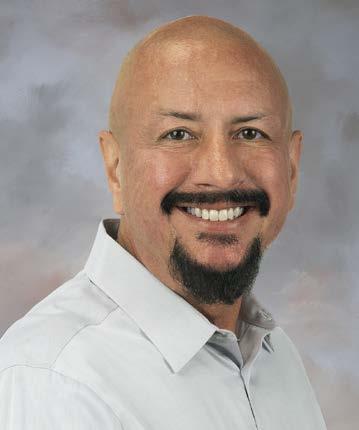
focused programs to reduce energy and water consumption across the Berkeley campus, and to work toward zero manufacturing waste. Meyer Sound’s products are designed for working lifespans regularly measured in decades. Although Meyer Sound’s contribution to green touring is focused on reducing emissions related to concert production, the broader green touring initiative also encompasses greenhouse gas emissions from venues and audience travel — the two largest contributors — along with merchandising, promotion, accommodations, and artist travel. Green touring also seeks to reduce other environmental impacts, such as reducing or eliminating non-recyclable solid waste. More critically, with the introduction of the PANTHER large-format linear line array loudspeaker — the company’s first product designed and engineered from conception to completion with sustainability as a primary goal — Meyer Sound has redoubled its longstanding corporate commitment to green touring. PANTHER was designed for a reduced carbon footprint in manufacturing, transport, and operation, and Meyer Sound’s continuing focus on sustainability carries through to all future product development, campus facilities, technical support initiatives, and education programs.”
The design criteria for PANTHER, according to Andy, required a substantial reduction in size and weight compared to prior generations of line array loudspeakers. The result is a system with a peak acoustic output exceeding 150 dB SPL and weighing under 68 kg (150 lb). This, according to the brand, has enabled users to effectively reduce on incumbencies related to transportation while assuring an approximate of 20% reduction in power consumption, without having to compromise on acoustic output in any way, shape or form.
Just like sound, LED display technologies is another aspect of AV that has become extremely vital in all application spheres – with current times showing an increase of over 75% in terms of consumption patterns when compared to figures from 2016. The exponential increase in dependency on LED display technologies has of course had a direct impact on the sustainability metric – with manufacturers of such technologies now coming under the lens and being expected to deliver efficient technologies that score high on sustainability as well as performance.
Absen – one of the most prolific manufacturers of LED display technologies in the world – affirms that the brand has been practicing sustainability principles in business operations, and insists on promoting green, low-carbon, energy-saving and environment-friendly manufacturing to contribute to the achievement of China’s carbon peak and carbon neutrality goals.
Esther Chen, vice president, Absen comments, “Improving on the environmental protection system is an important goal for us, and to ensure this, Absen has established its own environmental protection management system and has obtained ISO 14001 Certification (Environmental Management Systems), QC 080000 Certification (Hazardous Substance Process Management System), and ISO 50001 Certification (Energy Management System). At the same time, we consider it our duty and responsibility to consistently design and deliver high-performance eco-friendly products to our customers. This is why at the end of 2021, Absen launched the “Absen Green” initiative, under which its DOOH LED advertising display series was conceived and created. And it gives us great joy to affirm that this particular series of products can reduce energy consumption by up

to 50%, and heat output by 20%. The LED module used within these products supports high luminous efficiency for further energy conservation, whereas the display circuit ends up consuming lower power thanks to an extremely efficient and comprehensive cooling system. Finally, green and low-carbon operations is another aspect of our overall business that Absen has been paying keen attention to. This includes having in place a comprehensive system of provisions that allow for 100% treatment of wastewater, general waste, gaseous waste as well as waste material that could be deemed hazardous.”
Not to be outdone by their peers in sound and LED, lighting manufacturers too have included sustainability and environment care as a key aspect of their business operations. Renowned globally for their high-quality and high-performance lighting fixtures – ETC’s outlook on sustainability is very apparent in not just the way they conduct day-to-day business operations; but also in their newer range of technological offerings.
Wayne Wan, regional sales manager, ETC Asia, throws more light on the subject as he reveals, “ETC is committed to fostering a healthy, safe and sustainable global environment, and pledges to help protect and conserve our natural resources through responsible corporate policies and manufacturing processes by several initiatives. These include recycling and reducing wastes, engaging in safe and proper management and disposal of hazardous materials, and maximizing the energy efficiencies of machinery, systems, and all facilities. At the same time, We also conduct voluntary and ongoing process assessments to meet or exceed compliance with local, national, and international environmental regulations, e.g. the European Union's WEEE (Waste

from Electrical and Electronic Equipment) directive, the RoHS 2 directive, and LEED (Leadership in Energy and Environmental Design) certification program. And of course, ETC continues to invest in sustainable equipment and technologies, develop and manufacture eco-friendly products, ranging from daylight harvesting and motion sensors in architectural-lighting systems, to low-wattage lamps and reduced field-lumen output in Source Four® fixtures, ETC's equipment is among the ‘greenest’ in the market”.
Asserting ETC’s Source Four fixtures’ effectiveness in real-world applications, Wayne references the fixture upgrade that took place at the 1200-seater Samil Church in Yongsan-gu, Seoul; where ETC partnered with C&C Lightway (one of ETC’s dealers in the Korean market) in retrofitting the main worship hall with over 50 units of the Source 4WRD II, to now offer a more energy-efficient and cost-effective solution without compromising on performance and brightness.
He informs, “The system designer Jung Hoon Kim was looking for a white-light LED fixture that is easy to install and maintain. At the same time, Kim wanted a more sustainable and economical way of lighting. After consulting with C&C Lightway, it was determined that Source 4WRD II was the perfect answer. This energy-saving retrofit for a traditional Source Four light engine, transforms the HPL source into a whitelight LED. Its LED light source has an L70 rating of 45,000 hours with only 175 watts of power consumed per fixture in an hour, while Source Four consumes 750 watts of electricity. The Source 4WRD II is a sustainable solution that reduces carbon footprint by upcycling existing fixtures; which is an add-on bonus to the fact that LEDs enjoy a longer lifespan which, with minimum need for replacement. Plus, it’s 77% cooler than surface of a tungsten, thus reducing the need for air-conditioning. At the church itself, everyone’s noticed how the intensity of brightness is much more than
what it used to be; all while consuming almost 70% less power!”
Finally; rounding things off from the AV manufacturers point of view is the Robe Green Initiative by Robe Lighting, which ensures that the company’s entire manufacturing and logistical process adheres to strict standards of sustainability. “We believe in using our business, resources, and influence to inspire much wider and ‘bigger picture’ solutions not only in the world of entertainment and architectural lighting, and by harnessing the power and potential of new technologies to assist in contributing to a healthy environment that will help safeguard a future for all” asserts one of Robe Lighting’s spokesperson.
Hailing as one of the world’s premier brands in entertainment and architectural lighting; Robe’s tryst with sustainability apparently started way before the term became such an important buzzword of sorts, with the manufacturer choosing to renovate an old industrial premises instead of building on a ‘Greenfield’ site. The company is based in the Czech Republic and all processes involved in making the luminaires are undertaken locally in a 75,000 square metre premises consisting of a reconstructed brownfield. Additionally, the management also takes into consideration the issue of recultivation in projects for the construction and renovation of old premises and in the plans of land management.
Plus, at the start of 2022, the brand put into motion a plan to install a photovoltaic system with a peak power of 1,1 MWp on the roofs of ROBE’s factory buildings in Valasske Mezirici, in order to generate electricity from sunlight, and thereby not only lower energy costs but also lower CO2 emissions. Alongside, thanks to the planned cogeneration units, Robe will be able to generate electricity and use the excess heat for all its production spaces and office heating.
“As a responsible brand, we’re constantly monitoring the materials and techniques used, to ensure that waste is minimised and that all our manufacturing processes are as clean as possible and not consuming excesses of water and electricity. Recycling is actively promoted in all departments and we’re still looking for new ways to reuse waste and new ways of recycling. All elements of the manufacturing process – including plastic moulding, metalwork, PCB production, optical testing, etc., – are completed in house and 85% of all used components are also sourced from within the EU. Building a manufacturing base in the Czech Republic was a conscious decision to initiate shorter supply chains with less transportation required to assemble the finished products” informs the spokesperson as he affirms that ROBE became the first company to develop a fully ‘TRANSFERABLE’ LED light engine for professional stage lighting products, making the exchange of the engine a simple procedure that can be carried out in just a few minutes. This “TE™” technology is born from real practical experience and several years of development. It ushers in a new mindset, as well as improving the overall quality of LED lighting and boosting its longevity and relevance
He proceeds to reveal some of the other aspects of the production and operational process that propels the brand’s sustainability ideology, stating “All the production instructions are communicated via energysaving LED screens in the production workshops, thereby reducing paper wastage drastically. Also, in terms of packaging of component and products – to stay working smartly and sustainably, and to measure our impact on the environment, we are constantly setting targets for self-improvement through reviewing, updating, and implementing policies and working practices at our factory. In addition to recycled polystyrene and ecological film that has been used for many years in the company, we try to find a fully ecological replacement. At the same time, what truly
makes us stand out in a rather novel manner is the fact that we’re in the process of acquiring electric and plug-in hybrid cars to our fleet, in addition to the existing electric car charging point in the factory made available for public use in 2016. And finally, as part of our Green Marketing endeavour, we’re in the process of supplying our merchandise in eco-friendly packaging, as well as completely eliminating the printing of leaflets to lower paper consumption and save energy during the printing process. All our documentation and instruction product manuals have been ‘digital only’ for quite some time, and we support only online media advertising”
In addition to all the aforementioned aspects, it is learnt that Robe’s focus on employee welfare also incorporates sustainability as a key metric. For example, all employees enjoy a positive, clean working environment that includes staff facilities like a contemporary canteen that cooks fresh nutritious food for over 700 employees every day. All meals are served on reusable plates and no use of any plastic materials has been noticed whatsoever. This system has been found to encourage employees to stay within the company compound for their meals rather than travelling offsite by vehicle (cars etc), which in turn has contributed to lowering CO2 emissions. In the same stride, Robe employees too share the company’s zeal, as several staff members opt to travel to work by bicycle instead of cars, while also regularly practicing commendable deeds such as planting trees and adhering to proper waste sorting techniques.
All said and done; perhaps the most crucial step that Robe has taken to ensure all sustainability-oriented endeavours are planned and executed meticulously and in a timely manner, is having employed a fulltime ecologist whose primary objective is to focus on ecological processes and improvements in order to complete the verification of the company’s estimates
and calculations regarding various sustainability factors.
Perhaps the best way to look at the issue of sustainable AV is to view it purely from a business perspective.
Regardless of whether AV consultants, system integrators and manufacturers collude to offer AV systems that meet certification criteria like LEED etc, the fact still remains that AV systems do have a significant impact on energy savings or energy wastage – depends on how one wishes to view the matter.
At the end, it all comes down to financial implications. And companies that desire to build a legacy for themselves while assuring long-term profitability and operational viability will make peace with the higher initial cost of sustainable systems, knowing full-well that return on investment is likely to be manifold.
That being said, it is crucial to accept that widespread education and knowledge dissemination about the topic of sustainable AV systems needs to be made available to every stakeholder, especially the end user.
End-users wake up to the numerous long-term benefits of sustainable AV is likely to drive a more organic and more comprehensive adoption of sustainability as a key inclusion to every aspect of their respective business operation.
Hewshott
Barco
Epson Meyer Sound Absen
Extron
ETC Robe
State-of-the-art Sound Architecture
Digiann Solutions installs Adamson speakers for maximum impact
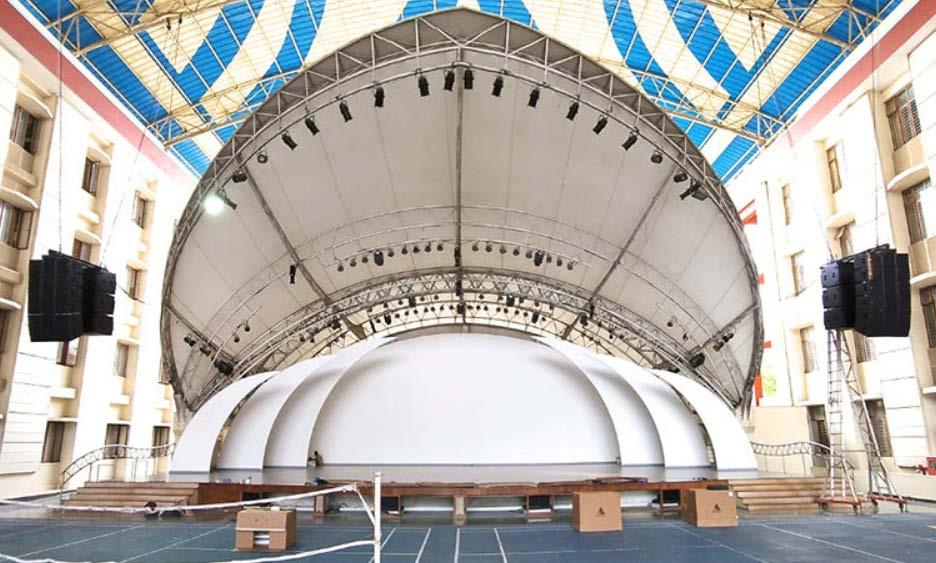 by Elton Noronha
by Elton Noronha
Project Name: CHRIST Kengeri Campus Auditorium
Project Location: Bangalore, India Project Segment: Education
Key AV Brand: Adamson speakers
CHRIST (Deemed to be University) was established as ‘Christ College’ in Bangalore in 1969; and was born out of the educational vision of St Kuriakose Elias Chavara, an educationalist and social reformer of the nineteenth century in South India. He founded the first Catholic indigenous congregation, Carmelites of Mary Immaculate (CMI), in 1831 which administers CHRIST.
Since its establishment, the educational institution undertook path-breaking initiatives in Indian higher
education with the introduction of innovative and modern curricula, insistence on academic discipline, imparting of Holistic Education and adoption of global higher education practices with the support of creative and dedicated staff. And in 2008, under Section 3 of the UGC Act, (1956); the Ministry of Human Resource Development of the Government of India, declared the institution a Deemed to be University, in the name and style of Christ University. And as it stands today, CHRIST hosts 3 campuses in Bangalore, Karnataka – namely Bannerghatta, Yeshwanthpur and Kengeri; alongside additional campuses in Lavassa Pune and Delhi NCR as well – with all individual campuses sharing the same vision and motto of providing an adept and advanced atmosphere that nurtures excellence in academics as well as extra-curricular activities.
audio system at their Kengeri campus’ auditorium; and after considering multiple options we finalized on the large format E-Series line array from Adamson. StageMix provided us with simulations using Adamson’s Blueprint software along with CAD layouts and schematics; and this helped us calculate the optimal speaker positions and rigging points required.”
The Kengeri campus shines as a bright example of the true CHRIST spirit, with its penchant for technological advancements to assist the overall growth and welfare of students and staff alike. And among the several noteworthy initiatives taken by the campus management within this realm, perhaps the most significant is its decision to equip the campus’ plush open-air auditorium with a new, state-of-the-art audio architecture comprising an industry leading line-array loudspeaker system from Adamson, with amplification from Lab.gruppen. The entire system was sourced through StageMix Technologies - the authorized distributor for Adamson Systems Engineering in India; and was designed and installed onsite by reputed SI service provider Digiann Solutions.
Jacob of Digiann Solutions who consulted on the install process shares, “The college management at CHRIST came to us wanting to revamp the existing
The new sound architecture at CHRIST University’s Kengeri campus’ 4000-seater open-air auditorium features a main stereo hang of six units of the E12 line array cabinets, supported by three units of the E119 subwoofers flown behind the main PA system on each side for optimal coverage of the audience area. At the same time, six units of the IS7px point source speakers have been deployed as center fills, which are supplemented by IS219 dual 19-inch subwoofers placed under the stage, along with multiple CS10p selfpowered loudspeakers that act as delays. The entire loudspeaker system at the auditorium is powered by multiple units of Lab.gruppen’s D200:4L amplification.
And the first event to take place at the auditorium with the new Adamson sound system proved to be a real treat for the entire audience, who were mesmerized by an absolutely pristine soundscape – the likes of which they hadn’t experienced before at the venue. As Rev. Fr. Jiby, Director of the institution, shares, “The inaugural event with the new audio system featured Bollywood artist Benny Dayal performing to a crowd of over 3000 students attending a national level architecture fest hosted at our campus. The system performed well above our expectations and we have received very positive feedback from the faculty and students alike.”
Taking note of the heaps of praise showered by the institution’s senior management for the positive
change in atmosphere that the new Adamson system has ushered within the Kengeri campus auditorium; Narayan of StageMix sheds light on some of the key challenges that the design and integration team had to overcome in order to deliver a superlative soundscape at the venue. As Nitesh informs, “One of the main challenges that we faced was that the system had to be suspended from a steel truss structure off of the roof. This meant that the weight had to be kept to a minimum and the load be distributed evenly between two adjacent beams. We were able to achieve this with the Adamson E12 since they’re relatively lightweight and the rigging hardware makes it easy to adjust the angles for fast and secure deployment. We’ve aligned and tuned the Adamson system in a manner that it provides consistent, clear audio right to the last seat, which is a distance of about 55 meters. We’ve also added a pair of CS10p speakers as fills at the back to further enhance speech clarity for the last few rows, with the speakers’ MILAN based networked audio
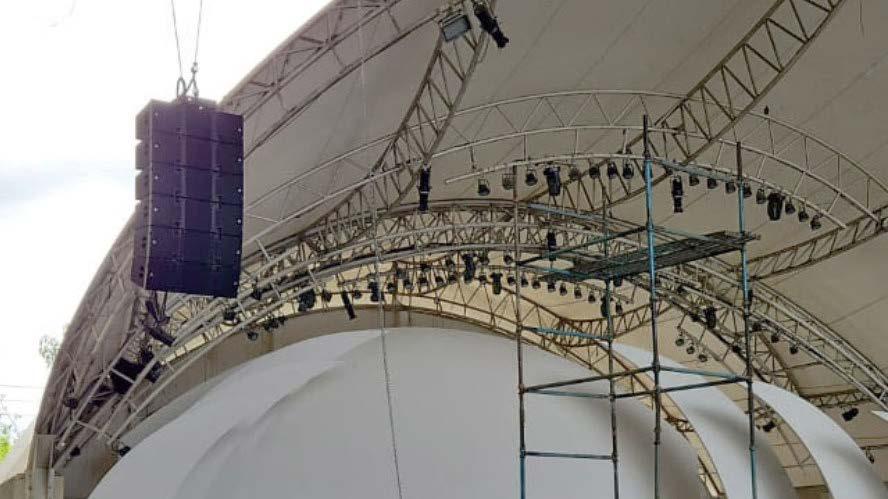
proving to be very useful given the long cable runs from the console to the speakers.”
Furthermore, Nitesh appreciates the long hours of work and effort invested by team Digiann Solutions, as he shares that it has has been a true comprehensive team effort in bringing the system together to deliver the kind of high-quality performance that it does. Jacob from Digiann Solutions agrees, as he reciprocates the appreciation saying, “It has been a great experience working with the StageMix team, as they were able to understand and cater to the exact needs of the CHRIST University management. The Adamson system covers the space so well and gives such a warm, smooth sound even at a higher SPL with no harshness; and the client is extremely happy with the result!” says Jacob in closing.

